#cycle routes in the new forest
Explore tagged Tumblr posts
Text
Sopley Farm, Pick Your Own: Enjoy Fresh Berries and More in Christchurch, Dorset | Travel
“Nestled in the idyllic countryside off the Avon Causeway, in close proximity to the picturesque New Forest, is Sopley Farm – a seasonal Pick Your Own destination! “ Sopley Farm in Christchurch, Dorset is known for its Pick Your Own experience, specifically for their juicy strawberries during the summer and their pumpkin patch in the autumn! This family-owned farm, part of Dan Tanner’s, has…
#Afternoon Cream Tea#airbnb new forest#best campsite in the new forest#brockenhurst things to do#Cat & Fiddle Farm & Café#cycle routes in the new forest#Dan Tanner#Dan Tanner&039;s Farm#detailed map of new forest#Fresh berries Dorset#hampshire accommodation#hideaway cabins#Hockey&039;s Farm Shop#Lenctenbury Farm#london to brockenhurst train#london to new forest#lymington beach new forest#map new forest uk#maps new forest#new forest accommodation#new forest bed breakfast co uk#new forest camping holidays#new forest car parks#new forest council#new forest council planning#new forest county#new forest cycle route#new forest day trip#new forest district council#new forest enclosures
0 notes
Text
♛/♡ -Tragedy
-ˋˏ ༻❁✿❀༺ ˎˊ-

-ˋˏ ༻❁✿❀༺ ˎˊ-
➸ INTERESTS; - aged up!neteyam x omatikayan f!reader
➸ BACKGROUND; - Love at first sight doesn’t exist, everyone knows that. There’s attraction, reaction, and understanding someone to call something love. Neteyam wasn’t sure what it was that he felt for you, but whatever it was, he didn’t want it to end.
➸ WARNINGS; - wc 5.6k, romantic tension, sexual tension, kissing, fluff, smut, yearning, build-up, stalking mentions, imaginative daydreaming, masturbation (m!undergoing), straddling, orgasm mentions, attraction, seductive mentions, sexual actions, slight dry-humping, arousal mention, etc.
➸a.i; - we are so back amen also not proof readddd + recommended songs below!!
(1st quarter)
(2nd quarter)
(3rd quarter)
(4th quarter)
-ˋˏ ༻❁✿❀༺ ˎˊ-
It started with subtle glances, correction, it always started with subtle glances. Impressively it hadn’t gotten much farther than that, but that didn’t mean he didn’t want it too.
Out at a large celebratory festival thrown by the entire village as a sort of remembrance of the great war is when he saw you. Of course, he and his family were the center of attention, being deemed some branch of royalty, and yet you were in his view all night.
His attention span wasn’t as good as he thought it was, or as well as his father had trained it to be, especially when it came to something he liked. Well, he wasn’t sure if he liked you, he hadn’t known you, not a name, a voice, or a touch, just a face, hair, skin, and your body.
Whatever it was you had him looking at you constantly, it was something he could do all the time without getting bored. Unexpectedly that’s nearly what he did all night if it wasn’t for his siblings and parents driving him elsewhere.
He watched as you interacted with your friends, or maybe they were family, he wouldn’t know. He watched the way you smiled and nodded as you listened to the conversation of others, oddly enough your smile was enough to make him smile as well.
His favorite was watching the way your chest heaved, and throat rumbled a bit before you’d laugh, quickly placing a hand in front of your mouth as you did so. Thankfully for him he was watching from the side, so he could still see your mouth as you laughed.
Or maybe the way you moved so fluently from one table to another to acquire more food and drinks for the others. The way you’d move to the sounds of the music, or how he’d read your lips to know you were slightly singing along.
Neteyam is a man of many things, an observer at largest. It’s one of the skills his father taught him that he’s always favorited. “Always check your surroundings when you enter a new crowd”, and somehow after taking in his father’s advice he’d always attempt to look for you.
In gathering parties after hunting cycles, visitors who would come to his family’s kelku or even his own, even while he trained the younger warriors as their general. Even if you managed to be somewhere off afar, he would be quick to catch your eye, you’d always stand for a second before waving him a quick hello before moving along.
That was enough to change his routine as embarrassing as it sounds. Like taking a completely different route to get out in the morning or get to base camp and train warriors earlier than anticipated on certain days of the week because you’d be in the forest across from the gentlemen.
He knew better than to approach you so suddenly, well not suddenly, it’s been weeks since he had first seen you. He wasn’t sure how he could form a simple conversation without fucking himself over.
It isn’t easy to start a small conversation and ask for the name of someone who you’ve been infatuated with for a while now. He would always just brush it off and try to surround himself with working or training to occupy his time.
Until of course his parents were sure to sit him down and now seriously talk to him about his future and their future heirs. The fact you continuously rotted his mind as his parents spoke to the point where his breathing was ragged was enough to say. His parents understood well enough there was someone who their eldest had an eye on, they just didn’t know if their son was ready for it.
Oh, he was more than ready for it, ready for you. If it wasn’t embarrassing enough, he prayed to Ewya several times throughout the day just to get closer with you, maybe bump into one another or brush against one another. Just to hear you laugh again or see what style you’ve done differently with your hair, and thankfully it seems she answered.
As Neteyam stayed late tidying up after the warriors he was training you waved off your friends, a basket clung to your side filled with fruits. His eyes never left your figure, narrowing them as he watched your movements as you spun around and listening to your words as you mentioned something that had given him interest.
“I can do next week's batch myself! Thank you, guys.”
Oh? That seemed like the perfect opportunity for him, at least to get past a hand wave each week. He smiled to himself softly as he began to think of what he would plan for then until he heard your friends reply back to you. They all yelled their goodbyes and your name following after, ringing in his ears like the roar of a palulukan.
“Y/n” he whispered to himself softly before chewing on his bottom lip. He hadn’t wasted any time in collecting his other belongings and making his way back to his kelku.
He had officially made up his mind on what he wanted to do, and how he would work his way up to you. He just needed to wait until morning and get as much sleep as possible.
-ˋˏ ༻❁✿❀༺ ˎˊ-
Neteyam was too clever for his own good, nodding too himself at a job well done before shoving the items he had taken back into his families kelku. Surprisingly enough he waited the whole week to remove the fruits on the lower branches, and leaving those only he could reach.
This was a new low, even for him, he’d never done something like this before especially not for a woman. Like everyone loves to say, there’s a first time for everything of course.
So of course, he waited and waited for you to arrive, keeping his warriors in training as he tightened the bindings by his waist before making his way over to you.
“Do you need assistance?” He asked, his voice calm but firm, looking down at you. You perked your head to the side slightly your eyes not leaving the fruits hung up from above you. He watched your arm reach back up again before lowering it slowly and fixing your eyes on him.
He took in your figure for a moment, watching as your hair now laid on top of your shoulders and collarbones now as you fully faced him. He also took in your scent, it was sweet and so captivating, if he wasn’t any stronger, he would’ve lost his mind over it, over you.
“Yes please, if you aren’t too busy” you said softly, nodding slightly and thanking him, taking a step back to give him enough space. He could never be too busy for you, never, even if he wasn’t he would’ve left whatever it was if he could just see you, let alone help.
He wasted no time in reaching his arm over, plucking a handful of fruits from each branch in front of the two of you. His hands were large, you took that into account, palming nearly 6 of the fruits in just one hand with a steady grip so they wouldn’t fall. Yet again he was gentle with them to the point where they wouldn’t burst or ooze out.
As you held out your basket for him to place the fruits in with others that were already inside you could hear his breath falter slightly. Your attention was focused upon his face, scanning it for something, whatever it was he hadn’t liked it, it made him uncomfortable. His gaze quickly diverted from yours, looking back at his warriors in training now on a ‘water-break’ before clearing his throat and speaking up.
“It’s nice to finally meet you properly, my name is Neteyam.” He spoke softly, turning his gaze back to you and motioning the ‘I see you’ gesture, as you did the same to him. He was whipped, his pupils widening slightly as he watched you in awe. Honestly if he hadn’t known any better, he would’ve assumed his jaw was open as he listened to your voice.
The way you nodded and smiled at him, not hiding it. Or maybe the way you greeted him and thanked him for his help, introducing yourself lines after. He liked the way you said your name, pronounced it in your thick accent, or how your lips pursed together when you said it. How it sounded differently coming from yourself than your friends from last week. He loved how you said his name, especially so fluently, so full of curiosity and care, or how your lips touched at the last letter of his name.
Maybe he does like you, just a little, remember he still doesn’t know you, or at least not as well as he wanted too, no matter how bad he wanted to change that. All he could do was watch you walk away from him yet again, a full conversation not even brewing between the two of you and it was killing him. Watching you wave your goodbyes to him, watching the way the small woven basket clung to your side like a newborn child, or even how you made walking look easy, different almost, in your own way.
He could only stand and close his eyes, bawling his fists for mere seconds to bask in your scent again, envisioning you again, you smile, your lips, your eyes, your everything. A snarl was practically ready to rip out from his chest, he was so close and yet so far. Temptation is such an evil thing, almost like a parasite eating at its host, but with Neteyam it seemed as if he loved the thrill that would come from it. Being nervous around you, going out of his way just to see you, or help you in any way he can, he’s not being weird or anything, just friendly.
Right
Friendly
He’s being friendly because he’s a nice kindhearted man, doing his duty looking out for the people in his clan.
So why was it so different with you? What made you so different? Everything made you different, like how you bring a heat to his face or chest, this isn’t normal in the slightest. He thought to himself how he interacts with other friends his age or how they make him feel, and it was nothing like this, and honestly, he wasn’t appalled, just drawn in further.
-ˋˏ ༻❁✿❀༺ ˎˊ-
It’s nothing but curiosity, he had questions and what better way than to answer them himself. He knows he has issues, like not liking to ask others for help, but he didn’t need it, he already knew so much about you from just watching you closely over the next few weeks.
What flowers you liked and how you liked them sorted, your favorite fruit being the same one he helped you pick, how many members of your family there were, and surprising enough you are the middle child. He was proud of himself, practically swallowing down the shame and guilt he had for following you around, he used his skills for great use, and it was only for a short period of time.
Now things have gotten even better, as your father had gone directly towards the leader of your people, Neteyam’s father for help on your behavior. Something new to get your energy out of, the stress and pressure of personal things were getting to you, and he was sure archery would be of great help.
Either that or sparring, and it seemed safer to spar, as he couldn’t dream of the casualty if you were to strike someone with an arrow. Whether you liked it or not you had no other choice to comply, but when you found out that Neteyam would be fitting you into his tight schedule and be your personal trainer things seemed to be a little better.
You were a very picky woman, but honestly you couldn’t hate or push past him, he seemed sweet and gentle, plus very handsome. You’d be completely stupid to send away a man like him, that you knew, and you were anything other than dumb, so you’d stick by him.
Like as of right now, being your first day of sparring with Neteyam. The two of you circling each other slightly, a small bruise on your arm as there was a much larger one underneath Neteyam’s left eye. Apparently, his job was to fish out whatever emotions he could out of you, and honestly it was working.
Of course, it was working because the way you attacked him was uncalled for, you were a fighter unlike one he’d seen before. You don’t fight with grace or precision; you fight with everything you have. As if your life is at stake and you’re struggling to stay alive, fighting however you can and using your surroundings. You fought against him as if he was genuinely inflicting harm onto you, as if it was kill or be killed in a simple sparring.
The several times he caught up to your tactics he only pinned your arms behind your back momentarily. His broad and heavy chest pressed against your broad back, both of your breathing patterns seeming to align with one another, heavy and rough. His breath fanning your skin by your neck, making you jolt slightly and kick his leg with force, knocking him back.
Is fighting supposed to have this much tension in it? It didn’t make any sense; this hadn’t made any sense. This was much more difficult than you anticipated, and worst of all Neteyam enjoyed every second of it. The touching, glances, subtle smirks or victorious expressions you’d give off.
He was doing it on purpose, between the two of you he was and would always be the better fighter, he was just letting you win. In his eyes you deserved it, you deserve anything he can provide for you, and so that’s exactly what he’d do.
He laid on the sandy floors beneath the two of you, sighing to himself heavily before propping himself up on his elbows. You turned around swiftly to take in his state, then looking back at yourself before offering him a hand. He happily took it and bounced back to his feet, announcing this would be the last fight between the two of you for the evening as the sun began to fade and colors filled the sky.
Well, that was a few minutes ago, as of now you were sure how or when this happened. Or maybe you made a wrong move to fuck yourself over, but this wasn’t expected at all. You laid back flat against the sandy floors now, Neteyam atop you, his forearm pressed against your collarbone as he used his hand to press down on your shoulder.
He was firm yet gentle, like he always had been, always had been with you. It’s not that you couldn’t move, you could, you just refused too. You refused to go anywhere or ruin this moment; with the way he was looking into your eyes or the way his seemed blown out you couldn’t help but look at him in awe.
The colors of the sky were now fully in effect as the dim sunlight shined brighter than ever, the hues mixing into his blue skin and eyes. Your eyes seemed to be moving at speed beyond explanation as you wanted to take in such a sight.
It hadn’t seemed like he wanted to move either, but unfortunately, he was quick to move off of you, apologizing. This time he was the one to offer you a hand to help you up, which you took and stood up, dusting yourself off. You also took this time to dust off your face if there was any dirt there before looking up at him.
His eyes were already fixated on you, correction, they never left you. You made your way around him slightly before squinting, as the sunlight was now directly on you and your face. It was hard to see with the nearly blinding light, but you could still feel his eyes on you. You only turned around, you're back now facing him as you packed your belongings before thanking him before getting ready to leave, and to which he wasted no time in stopping you.
“Will I see you tomorrow morning? After we return from our morning hunt?” He asked, his voice laced with anxiety and eagerness. Eager for you to say yes, hungry almost, and to see you nodding in agreement only sent a large smile plastered onto his face. The two of you saying your goodbyes and leaving your spot before seeing your families again.
The way you clouded Neteyam’s mind was intoxicating and sickening. He would trip over his own feet and tail if he hadn’t had a strong heart and mind. He finally had you exactly where he wanted you after so long and he was nonetheless happier than ever. He was happy that you finally saw him, saw how he saw you. Or at least he was content that you were able to see yourself through his eyes without having to share a word.
Oh, how he wishes he could come home to you every night instead of just the thought of you, his short, fixated imagination of you sprawled against his bed. Maybe even you waltzing around his kelku with that sly little walk you do, the one that makes him keep his eyes on your hips and thighs.
He wishes most of all in this very moment for you to be with him now, at the very back of his kelku, out of sight and out of mind. In his large cut off of water from the main rivers supply just to his satisfaction to clean off, the two of your bodies entangled with one another like how they had been earlier.
That would be perfect to him, feeling your hand graze down against his chest to his torso again. Or listen to you say his name over and over, and even the way you’d adjust your loincloth and top after every other fight. The sounds you’d make whenever he’d pin your arms, or how you groaned when he had you pinned to the ground beneath the two of you.
This is dirty, and wrong, so wrong, and something so wrong shouldn’t feel so good. Sadly, it did, and he just couldn’t help it or stop himself from going on, it was too much pressure to let build up. Neteyam could practically envision you in front of him, he traced his hands around his body the same way you had, picturing you with your small smile and scent talking to him.
He couldn’t stop himself he truly couldn’t, nothing could rip away this blissful moment from him. A moment so lustful and sacred and yet so beautiful and gentle to him was meant to be cherished and shared with you, and yet he still didn’t fully have you, he couldn’t have you.
The flicks of you replaying over and over in his mind as he quickened his pace down his body, his tip now leaning pre-cum as he continued, faster now. His breathing was heavier, and he felt more focused and intense than before, his non dominant hand gripping at the sides of his bath beside him as he went on.
Unexpectedly sooner than later, his climax came, much more intense than any other he’d had prior with any other woman he’d been with. This was raw and passionate, let alone the fact he was much more vocal than ever, mumbling your name over and over. Even though he bit down on his bottom lip to the point where blood was drawn, he couldn’t help his loud sounds as he reached his peak.
He was breathing like a man who hadn’t breathed fresh air in years. His chest heaving as he threw his head back with a sigh of relief, the hand gripping his sides of his bath now running through his messy wet braids. Cursing softly under his breath as he cleaned himself off with a slight smile on his face.
Desire is so dangerous.
-ˋˏ ༻❁✿❀༺ ˎˊ-
Yearning is a strange feeling, at least towards Neteyam. He was so quick and easy to pick out what he liked and didn’t like. Like the other women in the village, he had ‘met’ with. It’s not that anything was wrong with them, but when it came to actually listening to their morals or finding out they’d only gotten close to him because of his title and physical attributes he was quicker to leave them then pleasure them.
To Neteyam the first thing that caught his attention from you was being able to hear your voice almost instantly in such a loud and unique crowd. It was fascinating to say the least, like how he had sat alongside the ocean back when his family seeked refuge from the metkayina clan. The oceans crashing waves being so loud and deafening yet so soothing like nothing he’d experienced before until hearing your voice, then seeing you.
This was supposed to be your second week of training with another, transitioning towards a third. The more the two of you would spar, with or without weapons, he was sure to go easy on you at times. He was sure to give you distance, as he felt it wasn’t right you weren’t given much of it the first time.
But whatever gap that lasted between the two of you was quickly sealed by you. You didn’t like the distance between you too, you didn’t like his quietness. You wanted to see him how you had prior; you wanted him close to you and you wanted his skin to brush against yours.
Maybe it was just between the heat of battle from the two of you, but it was enjoyable. You enjoyed spending so much time of your day alongside Neteyam, not worried if you were to be bruised or laid out on the floor time and time again.
It pushed you to arrive earlier than expected towards your training with one another, to which you clutched your woven bag in one hand. You laid it out on the rocks beside you as you watched Neteyam, his back facing you as you listened to a repetition of a scraping sound.
“You’re very early today y/n.” He spoke smoothly, not stopping his motion of sharpening one of the countless blades scattered in front of him. His ears picked up on your footsteps through the forest long before his nose picked up on your scent, bringing a wide smile to his face.
“I’m sorry, I had nothing to do with my extra time, I didn’t know you would be busy. Ohe tsun za’u ne’im mawkrr.” [I can come back later] You stated, only earning a disapproving head shake from Neteyam who stopped his movements and placed a blade off to the side. He raised that same hand to motion for you to take a seat next to him, and you did just that.
The distance between the two of you seemed so far apart, even aside the fact you were seated perfectly next to each other. Legs crossed and your knees brushing against one another with each action Neteyam made as he sharpened the next blade, you only watched him.
Whenever you saw him or was as close as you are now with him his eyes were always fixated on you. His entire body was fixated on your figure, following your every move. Now it felt different watching him put that energy into something else, it made you curious exactly what it was for.
His scent was stronger than usual, making you inhale the air around you stronger than you had before. He smelled like the strong trees of your people and the soft moss around your home, or how free the air smelled before a storm, it was soothing.
It was also soothing to watch how he worked; you could tell he was doing this for a while, the objects leaving harsh red indents on his hands and arms. Or how he was sweating and because of that his hair on his hairline was stuck to his forehead, with the rest of his braids tied back into a loose bun.
All except one strand, obviously blocking his vision, and it bothered you just as much as it must’ve been bothering him. So, you helped him, you simply reached out to his face slightly and brushed the braid behind his ear, watching as his ear twitched in response. His eyes darted over to yours for only a split second before he chewed on his bottom lip and diverted his gaze back to his work.
‘Just look at me like that one more time, please’ you thought to yourself. Whatever you could do to help quicken the process of whatever he was doing you’d do just that. You wanted this to be over with, for you to have his full attention, you missed it.
“Thank you.” Was all he said, now hunching over slightly and continuing his work at a quicker pace now. You only nodded and hummed in response, your own way of saying you’re welcome. Your attention now turned to the bowl of cut fruits to the side of the two of you and the blades as small flies began to fly around it.
They must’ve been attracted to its scent and appeal. Sweet and soft, as you were in Neteyam’s eyes. The fruits must’ve been his, he just hadn’t had time to eat them, and it seemed now the pests were ready to do the job for him.
“They’ll eat your fruits if you aren’t quick enough” you joked. Smiling as you continued to swat them away and bring the bowl to your lap as you earned a small chuckle from him. Your gaze fixated on his face before back to the pests that now found their retreat and flew away.
“My hands are too dirty to feed myself. If I were to eat them all of these blades would be dirty and sticky.” He said with a hum, his hands running over the blade he just sharpened before placing it to the side, grabbing one of the last few from the large basket to his side.
“I can feed it to you.” You replied almost immediately, desperately, your face buzzing with excitement as your tail began to swing from behind you against the sand. Neteyam now turned his head to you, eyes fixated on your face, then your figure and pausing when he saw the bowl in your lap.
A familiar heat crept up to his face and chest, making his fingers clamp down against the blade he was holding and look away for a moment. He wasn’t sure what was worse, the fact you seemed so eager to do this for him, or how you hadn’t even known how intimate something like that was.
Surprisingly enough you hadn’t even waited for his answer, already picking a large piece from the bowl into your fingers and bringing them to his face. He only turned his head back to his work, as if rejecting the offer and sniffling, working much faster now.
You hadn’t taken that as an answer however, now moving the blades that were in front of the two of you off to the side to sit directly in front of Neteyam. Placing the fruit up to his lips and watching them intently, a smile grew to yours as he took the fruit into his mouth.
He chewed softly as he continued, you only watched him, the way his jaw tightened with each bite he dug into the fruit. Now you were fixated on his throat, how he swallowed, or how his abs flexed when he hunched over again, tossing the sharpened blade behind you.
You continue to feed him, piece after piece, he was gentle. Careful to not let his lips touch your fingertips, but that’s not what you wanted, you wanted to be closer, to be intimate. Maybe if you moved your fingers closer, you’d feel his lips.
It made you curious as to certain things like how they felt, if they were as soft as they looked. Or how they tasted, if they were as sweet as the fruit he was eating now. You were flushed but it didn’t matter, it was too late to go back now you just couldn’t help yourself.
It seemed your body was moving without your mind controlling it because without a second thought of feeding him the last piece of fruit you licked your own fingertips. What was even worse was the fact you made sure to do it as he had his eyes fixated on you, you did it on purpose to this attention.
The same way you purposely took the tools from his hands and tossed them aside, now sitting up on your knees and straddling yourself into his lap. You hoisted yourself up and rested your arms on his shoulders, interlocking your fingers behind his back before kissing him.
And of course, with your quick actions Neteyam hadn’t wasted a single second kissing you back, practically eating you alive. He was eager, hot, starving, and so desperate for you, so desperate for more. This is more than a dream come true, it’s like a blessing from above for him, and he didn’t want this moment to stop.
He could see it in your eyes what you were planning to do since you were feeding him, how you caught onto his body language. He was observing you, eating along with him, brushing your fingertips against his lips, watching as he paused to fix his loincloth before he continued his work again.
He saw the look in your eyes, a familiar one, because it was a look he had constantly given you, a look of yearning, starvation, and curiosity. Now you were kissing him, straddling him, and he just couldn’t help but dive deeper into you, your tongues practically fighting one another. You folded quickly under the pressure, your knees sinking as you melted into him, now attempting to pull back to catch your breath.
You moaned into him, and he felt your hands now pushing against his chest, but that didn’t mean he wanted to stop. He only grabbed ahold of your hands and continued, not caring to stop for air. He’d rather die than end this moment between the two of you, this blessed moment. Your lips hadn’t separated from his, your lips practically stuck together, you tasted so sweet, sweeter than the fruits the two of you were eating together.
Your mouth was hot and wet, it was welcoming, practically telling him to come in and make himself welcome, and he did so. After a few seconds he pulled away from the kiss slightly, your faces not even centimeters apart as you began to breathe heavy.
He watched your chest heave, placing a hand over it and feeling your heartbeat. It was fast, and strong, he only closed his eyes and focused on it, pining his ears to the sides of his head. He smiled to himself softly when you did the same, your smaller hand resting against his chest. He looked up at you, losing his thought in your eyes that only pulled him in deeper.
The two of you sat in the position for a while, lips brushing against one another but never being able to kiss as before. All until you pulled away, hearing footsteps make their way towards the two of you, Neteyam kept his hand in yours even after you stood up to cause distance between the two of you. You were startled to see the person making their way towards you was his sister, you jolted and pulled your hand back from him before she came over to the two of you.
She greeted you, and as she did Neteyam had stood up now, adjusting his loincloth from his obvious issue of earlier, a small wet spot on the side of it from you, now turning around to see his sister. The two greeted each other as you grabbed your bag, running your hands through your hair and placing a hand over your mouth, getting the image of earlier out of your head.
“Mom and Dad want to talk to you it’s urgent.” She stated, bumping her brothers’ shoulder before looking up at him. She followed his trail of vision to you, who had been waving bye to the two of them with a small smile.
She waved back as she watched her brother wave back with a large smile on his face, immediately catching on to his reactions. She only shook her head and sighed before taking her brothers hand to follow her in the opposite direction.
“Good luck with that, hopefully you can tell her before you meet the woman mom and dad have waiting for you tomorrow morning.”
What?
-ˋˏ ༻❁✿❀༺ ˎˊ-
-ˋˏ ༻Current Taglist༺ ˎˊ-
@bakugouswaif @erenjaegerwifee
✴🕷 please do not copy, plagiarize, edit, or translate any works submitted by me. all works are originated and all other pictures used within those works are online images. thank you!! @kryptznnn 🌸my main navigation
#kryptznnn#avatar the way of water#avatar 2009#avatar 2022#avatar smut#atwow#avatar#neteyam x na'vi!reader#neteyam x you#neteyam x y/n#neteyam te suli tsyeyk'itan#neteyam smut#neteyam sully#neteyam x reader#neteyam#neteyam x omaticaya!reader#neteyam x fem!reader#avatar twow#avatar 2#neteyam x female reader#Spotify
470 notes
·
View notes
Text
Collective Unconscious 0.3.0: Seashore Route
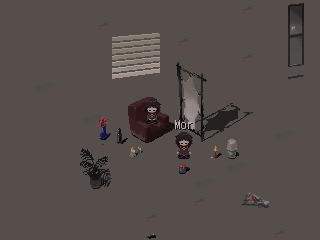
The Seashore route by fumin really got me thinking. It's very dense with symbolism and compelling imagery. So I wanted to lay out my personal interpretation here. Thanks to MorrySonando and Proton in the CU development server as well, as talking to them helped me polish my theory more. CW for heavy discussions of child abuse and some mentions of suicide.
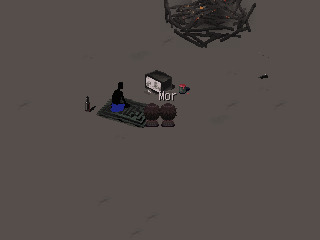
The whole route deeply feels to me like it's about trauma associated with your childhood home. For Seashore, I think it is playing into this idea of "childhood happiness vs the anxiety of growing up in an abusive household". You're on the beach with fun sandcastles and sand toys around, but strikingly, there is no water to swim in. And of course the beach is littered with bottles, which does make me believe an alcoholic parent is involved. The man sitting watching tv feels like it alludes to the idea of a neglectful or emotionally distant parent; like you're on vacation on this beach, and yet they ignore you. It's possibly also the parent or other adult figure who does not protect you when they should.
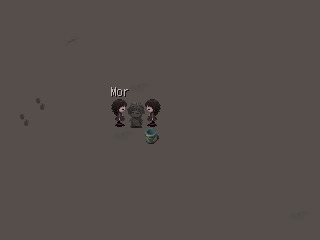
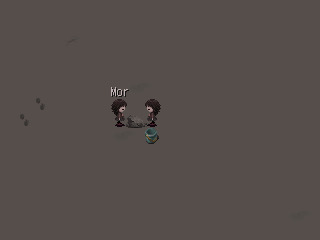
Also worth noting that the only thing you can do with the sandcastles (including one shaped like a person) is destroy them. It feels like an early signifier that the cycle of abuse will continue, foreshadowing for what's to come.
There's a lot of items on Seashore that could be analyzed individually as well, but I think it mostly plays into this "corruption of the safety of your childhood home" theme. Maybe I can dig into it in a followup post, a third visit had me noticing some particular ones.
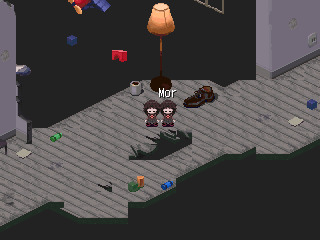

Toy World, the first big set-piece of the route, has the vibes of these kinds of warped memories of home you get, where there's your fun toys and happy memories but also this unsettling darkness. The warped floorboards look like a physical manifestation of anxiety and dread. (The one big hole also feels like foreshadowing for the ending of the route; I'll talk more about it when we get there.) I think Toy World's confusing and unsettling imagery is also reminiscent of how, as a child, you don't understand the scope of your situation. It is upsetting, yes, but you do not have the words or life experience to explain why, so it is confusing to you.
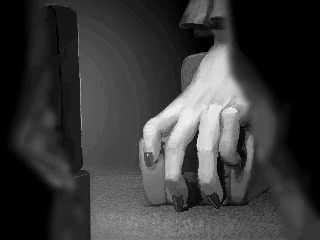
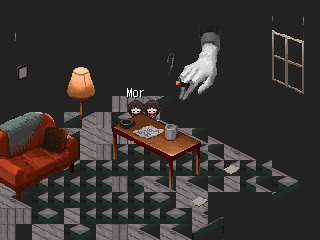
The hand symbolism is also one of the first big indications you get towards the theme of child abuse. When a parent is physically abusive, they can become nothing more than the hand they hit you with to you. In Toy World, we see two hands, one watching television and one smoking. Besides the "parent becoming hand" symbolism, both of these activities allude to the parents ignoring or neglecting Minnatsuki. To me it seems like parents who alternate between giving negative attention and giving no attention at all.
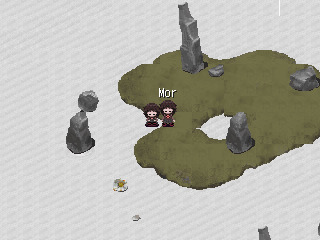
Next, you take a very professional office building looking elevator down to Zen Garden. At first, I was somewhat confused about this world's meaning, but then I learned that therapists' and psychiatrists' offices that take young patients often have something like a model zen garden for the child to play with. It's both fun and relaxing. In this way, not only is it a pacing break from the more thematically dark and intense Toy World and Forest, it also shows how therapy could've been a break for Minnatsuki. A wholly comfortable memory compared to elsewhere.
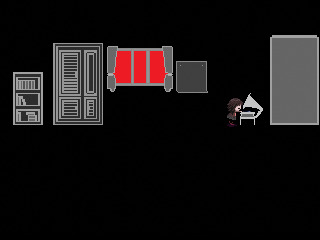
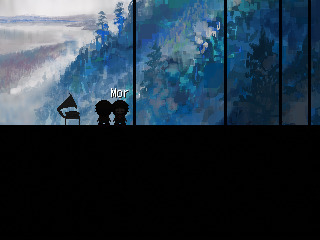
The record player room is very striking. The view flips from the unsettling dark house with the red window to a beautiful mountain forest view, bringing calm music to the silence. I think it shows more the difference between the home and outside of it. It could also be symbolic of growing up and seemingly escaping the traumatic household; you gain a new view of your childhood from afar, but the next world being Forest implies returning to it. A record player can also be a symbol for repeating cycles, so this feels like more foreshadowing for the ending.
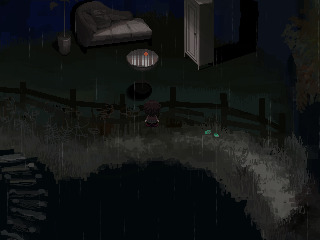
Forest is the other big set piece of the route, of course, and the finale. Again, it's a pleasantness contrasted by these hints of something being wrong. The room Minnatsuki refuses to enter, the shards in the water by the boardwalk, the dark version of the scene behind the fence you can find using youth.
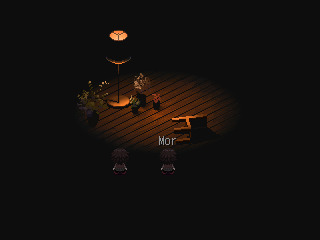
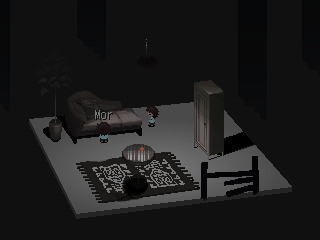
For the hidden rooms, in the first one, a fallen chair is often a symbol for death. The room being heavily associated with the death of someone could be why Minnatsuki refuses to enter. I am unsure, but I wonder if it alludes to Minnatsuki's abusive parent(s) dying after she became an adult, leaving everything truly and permanently unresolved for her. It could also be a fear of her own mortality, or the way that a trauma response can feel like you're on the verge of death. The second room's couch is the type often associated with therapists' offices; since it is dark and only accessible through a broken fence (so, it was meant to be barricaded), it could be showing that eventually Minnatsuki was unable to return to therapy, whether by choice or force. Perhaps she has not returned since childhood, which is why it's only accessible by becoming small.
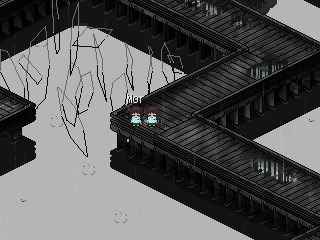
There's signifiers of childhood happiness in Forest, like exploring in the grass to reach somewhere you couldn't otherwise go, and the music at the docks in particular is quite comfortable and pleasant. But still, the uneasiness doesn't go away. Like you never truly feel safe there or elsewhere in the route really, even with the lack of a tangible threat. Like you're constantly waiting for the other shoe to drop. The happiness can't last forever.
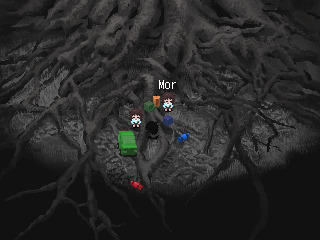
And of course it doesn't, with the whole route culminating in the final house. When using certain eidola, you can see the silhouetted child Minnatsuki, surrounded by toys. She is invisible unless you have an altered sight eidolon or the Soulfire eidolon. All you can do is look at her, unable to interact in any meaningful way (unable or unwilling to stop the abuse) or kill her.

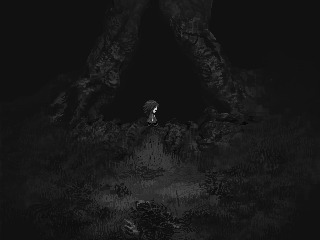
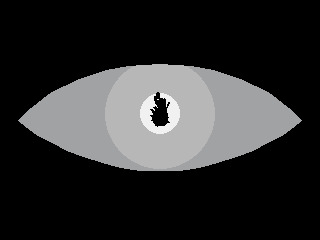
To me, killing her feels like continuing the cycle, reenacting the abuse you once experienced. The whole thing burns down around you, and, left with nowhere to go, Minnatsuki jumps into the bottomless pit revealed in the destroyed tree. The imagery of holes as early on as Toy World makes this feel like a foregone conclusion. The eye opening to see her falling body is an incredibly striking image, and it feels like a moment of clarity come too late. Like you finally understand that your behavior was abusive and it was wrong to emulate what you saw your parents do, even if you didn't necessarily know better, but it is too late, as you're already falling.
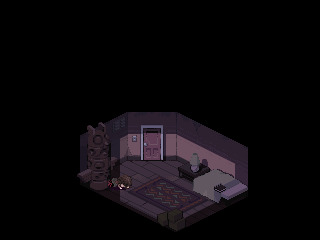
Of course, by the nature of Collective Unconscious having no death state, Minnatsuki does not die; she merely wakes up in front of the totem. Despite the bleakness of the ending, I think this can be seen as a second chance (either Minnatsuki's suicide attempt failed, or she only imagined attempting it at her lowest moment). Your childhood does not fully define you and you are not a copy of your parents; while escaping cycles of abuse is extremely difficult and can be lifelong work, it's not impossible. Even when you have hurt people and even when they don't continue, you can continue to put in the effort to become a better person. There is hope for the future.
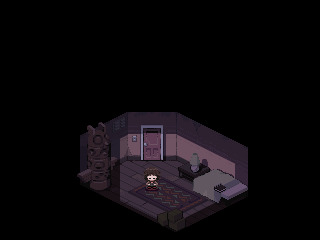
Perhaps that's a bit of a sappy note to end on, but this route really reminded me of some of my own experiences, and I have been putting in a lot of work recently to unpack and overcome them, so I would rather be optimistic haha. I think part of this route's excellence is that it is open to interpretation; everything I got from it is colored by my own experiences, after all, and I have thought of alternate ideas about what different things could mean.
Once again, thanks to my fellow Collective Unconscious developers who I was able to discuss this with the solidify my theories, and thanks to fumin for creating such a beautiful and meaningful route. I encourage you all to experience it for yourself and formulate your own interpretations, too.
15 notes
·
View notes
Text
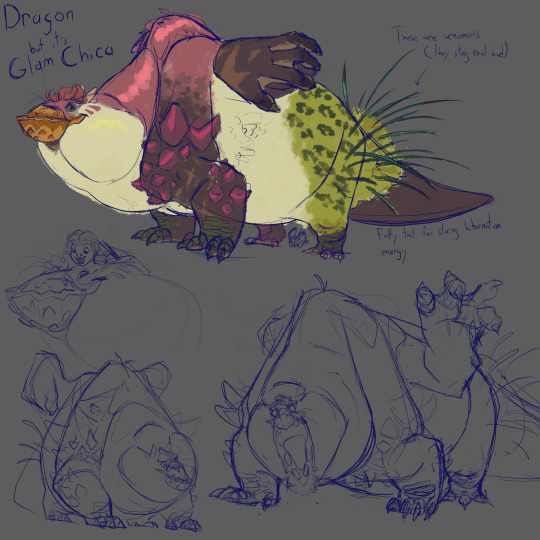
Damn I missed another entire month and for WHAT but here’s the first of the lineup because fuck it SMAUGUST IS FOREVER (to be fair to myself I’ve been busy being experimental and taking my art studies seriously but AUGH)
The others are still in the microwave so y’all get Glamrock Chica first!
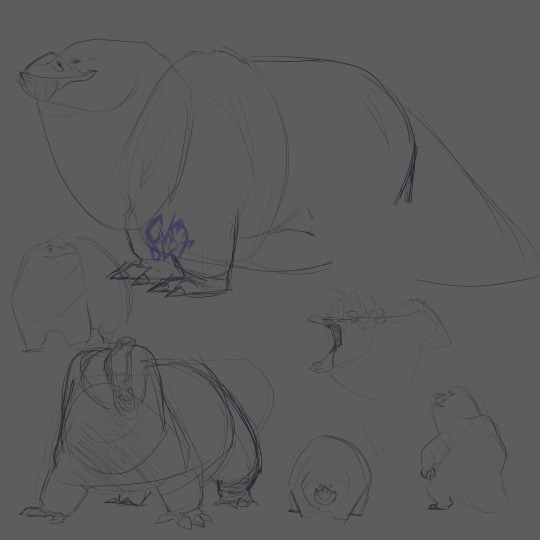

And some design exploration on the side!
Info on this lovely girl under the cut
Chica is a wandering Drake who comes and goes as she pleases through Hyde’s Crossing. Dragons (and monsters in general) like her are tolerated so long as they don’t cause trouble, which she doesn’t for the most part, but her tremendous metabolism (and in turn massive appetite) make her the scourge of farmers and cultivators near and far.
When she’s not being fended off with brooms and the odd pitchfork (Old Man Farkle is a Spicy One) along her foraging route cheekily close to people’s properties, she’s either hard at work maintaining her hoard in the form of a massive network of orchards and fruit/vegetable gardens spread all throughout her territory, or patrolling its edges to ensure no creature meaner or nastier than her tries to cause trouble for the people who rely on her orchards and in turn offer her edible goods of their own. It’s a symbiotic relationship, and she’s good on maintaining her end of the unspoken bargain as this side of the kingdom’s makeshift guard dragon.
Chica goes through a cycle every few years where she’ll sleep for a year straight. In order to build and maintain the fat stores needed to endure this cycle, she must keep eating. This is partially the reason for her choice of hoard (drakes like her are big eaters in general, each one having a favorite choice of yummy thing to snack on), partially because Hyde’s Crossing keeps falling on hard times and getting worse and worse each year. As long as you’re in need and she has food to offer, she’ll let you fill your basket ‘til you can scarcely carry it.
Out of the main cast, she’s the second largest (and the second physically strongest). Don’t think for a moment that there ain’t a wall of solid muscle beneath the squish and the fluff, girly gives an elephant a run for its money 💥💥💥 she’s also one of the more placid dergs you could run into while wandering Targum Forest.
Just give the bakers that live there a wide berth, they’ve invented a new delicacy and lent it to her to try and she seems prettyyy mad for the stuff 🍕
#smaugust#bzkt barf#fnaf sb au#dragon chica#fnaf glamrock chica#fnaf security breach#artistsontumblr#art#beeg lass#wanted to make the girls more monster-y given the source material#still kinda figuring out Roxy but the boys are pretty much done!!#have her to tide you over in the meantime
203 notes
·
View notes
Text
Stewjon and Its Peoples
A Complete Guide to the Planet, its Peoples, and its History
[Yes, I went a little bit insane. And yes, I have more projects I should be doing. I know that full well. Here, have a 4k long extrapolation on the Stewjoni.]
The Planet;
The Planet Stewjon is an averagely sized, mostly temperate planet with two celestial moons. Its rotation cycle lasts an average of 28 hours, with just under 320 days in a standard rotation around the sun, which is named 'Itz' by the locals. The planet has three large bodies of water, each connected to the other, known as the 'Great Seas', and most of the world's population sits along the coasts of these seas. Stewjon experiences moderate seismic activity, although only along specific rings, where the cities are rarely built above three or four stories. Stewjon is located in the Core, and sits along a defunct Hyperspace Route that fell out of frequent use after the New Sith Wars ended. Stewjon has a standard gravitational pull, a breathable, arable atmosphere, and contains both lush forests, bountiful seas, and polar circles. Winter and Summer are extremes, and the planet experiences a seven-year average water cycle that creates a distinct feast and famine alternation. Winter brings snow to the areas of the Poles, and Summer brings fires to the lands that currently sit along Stewjon’s Median Line. The earth of Stewjon is rich in many semi-precious to rare metals, but less so than many Outer Rim planets. However, the true jewel of Stewjon is the planet's strange volcanically created crystals and coloured waters that were once a great tourist attraction. These crystals are believed to have been what has caused many of the unexplained phenomena of Stewjon’s long and complicated history. [Extrapolation needed]
The People;
There are multiple peoples that consider Stewjon their home world. Before occupation by the Sith, and even earlier, the interference of the Rakata Empire, it is believed that Stewjoni were once a singular race. Genetic research compiled by the Stewjoni Medical Board currently presents that Stewjoni were humanoid in shape - pre-interference - but did not have their quintessentially modern appearances of the current subclasses of Stewjoni. It is currently believed that the first few splits in the species occurred naturally, in the form of the Faedh and the Sidhe.
The Faedh – ancient ancestors to what are now called the Seraphim, or the Sephi – were similar to the so called ‘Angels of Iego’ in appearance. They were commonly tall (standing on average from six to seven feet when fully grown), with elongated features, and were thought to have glowed slightly in the dark. It is this trait that is believed to have caused them to deviate from the main Stewjoni species. It is indicated in research that not only did they have membranous wings, contrary to other Stewjoni species with furred or feathered wings, but soft antenna instead of the more common antlers. The major difference between the species has been discovered in ancient burial grounds and upon study of bones and holograph evidence. The Faedh were believed to have been what is now considered ‘Force Sensitive’ in a specifically linear way. Ancient writings from old Stewjoni archives painted a people who looked like Faedh to have been Seers, or Prophets. Much like most of Stewjon, Faedh had metallic red hair, and largely opaque, colourful eyes. They were also believed to be non-venomous, which is a possible reason for their exodus off Stewjon, and for leaving the Core worlds.
The Sidhe – who are still in existence deep within the Great Woodlands of Stewjon – were small (somewhere from two to three feet in height) and are believed to be the mostly closely related to the ancient Stewjoni genus. Much like the Faedh, they possessed wings, although typically lightly furred. There were the odd exceptions of membrane winged Sidhe, but they were often contained within a small cluster of families in the Deep Woodlands. Sidhe were often colourful, although it is believed they have begun to take the appearance of similar features to their neighbours after the attempted eradication by the Sith. Sidhe often have short little horns instead of full antlers, and usually only sets of two, to four. Sidhe are the longest naturally lived of all of Stewjon’s native species.
The Common Stewjoni (Modern) is typically human in appearance, with a couple of notable differences. Stewjoni, and those with Stewjoni blood, are often easy to medically identify, if hard to spot as a passerby. Stewjoni have two livers, to protect from Stewjon’s many toxins and hazardous wildlife. Stewjoni also have Retinal Tapetum, or reflective irises, although it is unknown why this particular trait emerged in the species. As a species, Stewjoni are often rather diasporic, with certain areas having vastly different common features than others – sea the Saphire Islands, where children will have white hair until they hit puberty, or the Nameless Lands, where many Stewjoni have blue, or even grey skin, despite no relation to Pantorans, or Chiss. One of the common attributes known by outsiders is the Stewjoni ability to, it is believed, ‘breed with anything,’ however this is not strictly true. The reproductive processes of most of the Stewjoni is typically humanoid – much like most warm-blooded species – with a few glaring exceptions. First, are the unusually specific requirements for getting a Stewjoni’s romantic attention. Then the particulars of actually successfully copulating with a Stewjoni. And then, it depends entirely on your and their subspecies whether the egg (yes, egg) is soft shelled, or hard shelled, which in turn changes both how many children will be born, how long gestation lasts for, and whether or not the child will survive infancy. The other common misconception about Stewjoni is their red hair – yes, it is now the dominant trait of Stewjon. However, this trait was specifically engineered to become exclusive by genetic tampering. Red hair was always common, except now it is almost impossible for Stewjoni to have any other hair colour thanks to this fact. It is also believed that the red of the Stewjoni never fades. This is unfortunately untrue in certain circumstances.
The Ancient Stewjoni are beyond living memory, and whilst many have theorised what they would have looked and acted like, the truth is unknown. It is believed that they were a combination of much of modern Stewjon.
Their Biology;
The physical body of most Stewjoni – even those only partially, or adjacently Stewjoni – are often similar. First, most Stewjoni are considered venomous. The venom in question is, truthfully, more of a muscle relaxant and tranquiliser than a true venom, as it very rarely kills by itself. It is believed that Stewjoni gained this ability to help them escape a predator that had pinned them, and run their own prey into exhaustion. It also assists with inter-species relations in many ways – such as being a common ground between many predator and prey species, and being largely helpful in difficult sexual relationships. It is not a true sedative, and cannot be used like the holoporns suggest, either. Stewjoni view unmitigated use as a form of harassment. A form of punishment is the surgical removal of said teeth – very rare, viewed as the worst of punishments.
Modern Stewjoni – if living off world – are required to attend a set of ceremonies during their aging. First, is their official blessing into the community at thirteen, as they believe the beginning of puberty to be a time of celebration. Second, is their seventeenth, often seen as their first forays into learning the ways of the adult warrior. And third is twenty-three, when their body is settling into its more permanent form, seen as the introduction of the person in question to the world as a true adult. Each of these ceremonies coincide with important biological events in Stewjoni life – from the age of thirteen onwards, the children will often be on watch for possible ‘threats’ and have higher than traditionally human aggression levels due to having been heavily hunted by Sith and others at this age. At seventeen, Stewjon allows children to take charge of their own affairs and begin to take steps to leave the nest of their parents, whilst still being a part of the immediate family. Most Stewjoni will become fiercely independent at this age – in their own way, which is still largely communal due to the species’ social needs. And at twenty-three, Stewjoni are often encouraged to travel their world. Once, before the Sith, the histories state that Stewjoni would travel the world and bring back stories, wisdom, and new kin. That is no longer possible under the Isolation Acts enforced by the Republic.
Stewjoni have a close biological relationship with the force. It is incredibly rare for Stewjoni to be born Null. It is also rare for Stewjoni to be particularly powerful. The average midi-chlorian count of Stewjon sits in the range of three thousand to eight thousand midi-chlorians, just under the Jedi Order’s acceptable amount. Admittance to the Jedi Order is often only allowed in the case of special abilities – such as powerful visions, or unusual talents such as disintegration. Due to this, it is often observed that Stewjoni are incredibly sociable, and empathic creatures. The community comes first to a startling degree, and it is common for entire families to spend their lives together. Children are raised communally on most levels of Stewjoni society, due to the biological prerogative of the children of the people being the highest priority. This has such an instinctual drive that most of Stewjons wars, conflicts, and laws almost always directly relate to children, their rights, and the protection of. This unfortunately means that children, left unattended around a Stewjoni out in the galaxy, have a large chance of being spirited away to Stewjon, not to return. This is rare in modern times, but still possible, and difficult to counter when up against an entire planet. (See Stewjon vs The Republic for more details.)
The red of Stewjoni hair is due to a couple of factors. It is first of all, similar to the colouration of the Twi Lek, in which certain shades and patterns travel down family and Clan lines – the blood red hair of one Clan being specifically different to the fluorescent, mildly glowing variety of their close neighbour’s being key example. It is also true that the red of a Stewjoni’s hair should be permanent for their entire life. Only stress, strife, suffering and pain should ever dull a Stewjoni’s hair. If surrounded by loved ones, it is rare for grey hair to do more than pepper a Stewjoni’s hair until the death of a partner, or a child, or other such tragedy, and it is more common for a Stewjoni to die out of grief than for them to continue living past such things. The grieving is a private affair, and many Stewjoni have refused to explain the phenomenon to outsiders, claiming that without the force, they cannot explain such things.
It is said that hair, once cut from a Stewjoni – if provided willingly – will stay as bright as the day it was given as long as the Stewjoni lives. The Jedi Temple has evidence of something suggesting this to be true in the ancient records of the Archives, describing a Master finding their padawan’s braid, coloured white after their death.
The reproductive process of the species is often instigated through external pressures – such as change in season, diet, and circumstance. Many Stewjoni will go through delayed puberty without being forced into fertility. Additionally, the idea of Stewjoni being easy lays is quite far from the truth. Many Stewjoni will take certain behaviours commonly accepted by much of the galaxy – prolonged eye contact – very differently, which causes friction between Stewjoni and their partners. Stewjoni as a species require large family groups to reduce stress and promote a sense of calm and safety. Only young Stewjoni tend to leave home alone, and even then, are often shadowed by older clan members. The adage of ‘If you see one red, there are more unseen’ is very true, and is basis for much of their interactions with the greater galaxy.
Sexual dimorphism is limited in Stewjoni, and almost invisible to outsiders. Many would claim that almost all Stewjoni seem to be the same sex, or similarly shaped, but this is often due to the necessity for their people to blend in amongst each other. Stewjoni, after much of their historical strife, are a preferred target for slavers, as they are considered exotic, and either good slaves or gladiators. Stewjoni are often confused by the question of whether they are male or female, as there is such little difference in their species between one or the other, however. There are some key things to remember. Not all Stewjoni have the appropriate organs to carry, or have children, but the vast majority – well over 80% of the populace – do, which makes the conceptualisation for the differences in gender seemingly meaningless to them. Those who are explicitly only female, or only male, make up less than 40% of the total populace, and it is believed the margin is only going to continue to decline, due to the biological interference of the Sith. It is not uncommon for only those with higher testosterone levels to have facial hair, however, this is not exclusive, or even all together common. Some sections of Stewjon only have hair on their head. Others, like the remaining Sidhe, have a light dusting of metallic fur all over their body, almost translucent. Additionally, modern Stewjoni often only show the more extreme variations of their natural colouring if they complete their coming of age on their home world. It is unknown as to why.
Their Culture;
Religion
It has been observed that Stewjon have a religious relationship with death in a way that most of the Galaxy cannot comprehend. It is often observed that Stewjoni will behave as if their loved ones aren’t dead per se, simply resting, or out of action. There is still a sense of profound grief at the loss of life, especially young, as they believe that the being in question has not yet learned all they needed to proceed to their next life. The religious worldview of the Stewjoni is very cyclical. All things are connected, running into itself like a stream, and there are festivals that celebrate the passing of time of the last rains of the year.
It has been considered a religious requirement for Stewjoni to learn to either dance or fight to appease their ancestors and their gods – to prove they are worthy of the life they have been awarded. It is also considered fair to judge another and their clan on their battle, or physical prowess. Stewjoni must have purpose within the community, even if that purpose is simply to provide company, it is treated with great respect. An example of this would be an ancient story of a warrior who broke their back, and could no longer walk, but continued to tell stories and fables to children until their dying day. They are held as a hero in folklore despite having never won a fight.
Stewjoni believe all things have soul, or life, if loved and known long enough. It has created an interesting conflict between the Stewjoni and their neighbouring planets when it comes to the introduction of droids in day-to-day life. Stewjoni don’t believe in the purchase of droids as you cannot own and purchase people in their beliefs, and due to this, despite their respectful treatment of the automatons, very few droids exist on Stewjon. Additionally, the extremes of Stewjon’s climate tends to destroy unprepared hardware. There are a multitude of religious diasporas on Stewjon, with the practices varying not just from city to city, but from clan to clan. Paint and tattoos on Stewjon have particular cultural and religious significance in certain groups.
Relationship with the force
There are many force sects on Stewjon – before their interactions with the Je’daii order, Stewjon had as many temples as there were cities, but once the fledgling republic discovered the planet and its peoples, a set of skirmishes almost wiped out the religion and force sects off the face of the planet. Fortunately, Stewjoni are first and foremost survivors, and believe in communal knowledge, and it took a Je’daii living undercover for three years to finally be allowed to enter a Stewjoni Temple.
The Modern Temples, further destroyed and tarnished by the ancient Sith battles, fall into a small select systems. The Star Temples, who predominantly teach their disciples how to interact with the great cycles of the universe. The Storm Temples, who teach their disciples to weather great pains and protect their kindred from the affect of outsider magicks. And the Summer, or Sand Temples, who teach their disciples to pull from the ebbs and flows of life and death without enforcing their will onto the world. Only the Star Temples – most specifically, the Star Temple of the Capitol of Waijoni has ever been accessed by a member of the Jedi Order.
It is believed by outsiders that Stewjoni throw away children too strong in the force. This is untrue. Stewjoni are often heavily connected in the force that binds all things, and often entire families can fall into the same nightmare or vision if an untrained Seer lives without shielding. This caused the Stewjoni obsession with Mandalorians, which will be explored in history. The inability for the children to separate from the minds of their family causes some strife, unprepared, or weaker in the force parents often place their children in care until they can come and collect them. However, stewjon is constantly in turmoil, and so children are often swapped between families by choice, by accident, or by force. There fore, to keep the more powerful seers from being poached until they can defend themselves, Stewjoni will often temporarily donate their children to Temples around the galaxy, and come to collect them when able. Other occasions, such as force related illness, can cause mass and sudden abandonment and adoptions as well. This also led to Stewjoni of ancient times racing off into the stars to chase a ‘call’ only to come back with children from around the Galaxy, often taken from unprepared parents.
This has lead to Jedi and Stewjoni being conflated together, being synonymous with ‘Child Stealers’ which is true for one, and not the other.
Whilst most on Stewjon are born with at least more than a passing Force Affinity, those without are often considered safe to send out into the galaxy under modern law, as they will often be able to resist a call from the stars. Ancient Stewjoni Force Sensitives travelled on great ships powered by something the species carefully keeps secret from outsiders, but allows the Null Stewjoni to interact with the force whilst flying said ships. The smaller ships of modern times are fast, agile, and are often spotted in patrols of no more than six, travelling around the galaxy across the ancient passages the Stewjoni People once travelled in their many Force Pilgrimages among the stars.
Language
Due to the frequency of force sensitivity and the incredible empathy of Native Stewjoni, it is believed that the Stewjoni Language only developed so that those who couldn’t sense the force, or outsiders, could communicate with them. This unfortunately means that Stewjon has all the hallmarks of being a pidgin language, and thus has very few completely rigid rules in place. One of the few common conventions is related to writing, and script, which was the basis for the words and their phrasing, however much of Stewjon’s language style was borrowed from others. Such as Ba’va meaning ‘Uncle or Auntie’ or B’ur meaning ‘Mum or Dad.’ There is even significant pidgin from the ancient Je’daii who interacted with Stewjon – such as Dai meaning ‘offworld Force practitioner,’ Je’deyir meaning ‘Outsider’ and Sythe meaning ‘enemy/monster.’
One of the most well-known names out of Stewjon is ‘Obi Wan Kenobi’ after the many historical figures from Stewjon with that name. However, it might surprise you that Obi Wan Kenobi is not a name at all, but a red herring. It was designed, after one of the worst civil wars on Stewjon’s surface, to separate unclaimed, and claimed war orphans. It was supposed to be a way for the child to know that they hadn’t been picked yet. However, outsiders construed the meaning, and took it to indicate the child was unwanted, not unable to be cared for, leaving many Stewjoni who’d been forced from the system with that name when occupied by the Republic into poverty. This of course instigated much of Stewjon’s attitude against the Republic, the Jedi, and the Galaxy. Obi Wan Kenobi means ‘no one, of no clan.’ Which is contrasted by the real meaning for exile, which is ‘Wan Bi Kitrir,’ or Undesirable Person.
It is believed the word ‘Ken,’ for clan, came from the root word for ‘kin.’ Stewjon has no name in the language of its peoples, it is simple titled True Home, or Suti’yon, which was misheard by travellers as Stewjon.
Family and society structure
The importance of family and community in Stewjoni culture has lead to some interesting dynamics not commonly seen in seemingly human species so close to the core worlds. [Unfinished]
Their History;
Early Stewjoni have been documented around the galaxy in eras that long predate the accepted comprehension of space travel. This has led to the belief that ancient Stewjoni utilised vastly different tech to the Rataka Empire long before they encroached on the galaxy. This of course means that even on planets that deny any relation to Stewjon, the quintessential metallic hair and reflective eyes can reappear thousands of generations onwards. It is believed – and perpetuated – that Ancient Stewjoni often travelled to for off worlds in some form of ancient migration or forgotten force practice.
This brings us nicely into their first specific recording. The Pantorans claim that, sometime in the era of 32 000 to 30 000 BBY, a troupe of Stewjoni were in residence to bear witness to the winter solstice festival. They were documented to have stayed a few months, danced, and sung and spoke in a strange, incomprehensible tongue, introduced their magick and technology to the people around them, shared star maps, and left for their next location.
Mandalore states that, sometime around 20 000 to 15 000 BBY, an ancient Manda’lor and another troupe of Stewjoni assisted each other in a great battle against a nameless group of mercenaries preying on the Starships used to house the population of Mandalore at that time. Historians theorise that this may be why the words for magick, force healing, and other non-jedi related variants of the skills began to appear in Mando’a at this time. It also coincides with the Dathomiri beginning to be commonly widespread around the area Mandlore will one day occupy. It is believed that sections of the magick is in some way shared between what Mandalore remembers of Ancient Stewjoni, and what Dathomir has taught them.
Recorded history of real note on Stewjon picks up a written form around the 13 000s, and sometime during this period, Stewjon begins to select a princess – a person who is actually not required by Stewjon to be female, just mistakenly titled that way by outsiders upon meeting – to be the interplanetary advisor between the rest of the Galaxy and Stewjon. Around this time, the ancient Hyper-lane between Stewjon, their nearby branch worlds that would one day be lost to the Sith Lord Nihilus, and Iego would be documented by the Republic, and fiercely defended by Stewjon in what is described as Stewjon’s first real battle on the Galactic Scale.
It is somewhere around this time that Stewjon garners the attention of the fledgling Sith Empire of the era. In 7 000 BBY, Stewjon documents a rapidly rising number of assaults on the edge of what was once ‘their space’ – which under modern laws, they no longer possess – and this caused a number of Stewjoni Warships to be scrambled to meet the assailants.
It is described by many that from 6 000 to 5 000 BBY, after centuries of subtle genetic experimentation and torture, Stewjoni began to disappear from the galaxy. The Republic still hadn’t documented them as a species – and the ancient Jedi order has lost much of the knowledge in the most recent assault on their new Coruscant Temple, and no longer had information of the Species – this meant that when Stewjoni began appearing among the Sith, often enslaved, or Fallen, the Republic simply saw them as tube made creatures from the labs of the Sith, and put them down in the same way. This caused incredible outrage from what remained of the Stewjon at the time, who started a three-way assault on the Jedi, the Republic, and the Sith. It ultimately led to the occupation of their world, and the destruction of their temples, first at the hands of the Sith Empire, and later at the hands of the unknowing Jedi order, who had no precedent for what Stewjoni should have looked like, and almost eradicated the entire species by accident.
In the centuries that followed, Stewjon became incredibly insular, and began to bar entry to outsiders due to the suffering that the Sith and the Republics attempts at eugenics had caused them, leading them to be wary of anyone not outright part of their people. Stewjon had been under Republic occupation for almost a thousand years when the Sith Empire and the Mandalorian Empire went to war with the Republic, and in this time, Stewjon broke free of control, and actively killed any and all republic citizens still in their worlds. Unfortunately, they again attracted the attention of the Sith Empire, and begun to have to fight both just to survive. In the few occasions that Mandalorians and Stewjoni met on this era of battle, it was cold, but respectful – as Mandalorians still told tales of the Stewjoni of old, and some of the more non-human Stewjoni still were prevalent in society.
Stewjon eventually offered support to the republic against the Sith on smaller, closer to coruscant battle fronts that caused the Republic to allow Stewjon to move into true isolation – left alone in the heart of the republic as a non-member world, completely self-sufficient. The Jedi were barred from entering the planet’s space after Darth Nihilis destroyed much of the nearby systems unless they were a Finder. Multiple children were given to the Jedi Order at this time, and were also brought back to Stewjon, without their Master, for their coming of age.
When the New Sith Wars began, the Stewjoni sided with the Jedi and the Republic near immediately, resulting in much of the Galaxy following suite. After them, midway through the wars, Mandalore also offered their support, which cemented the first official treaty and legally documented interaction from Stewjon and Mandalore, resulting in the suspected apprenticeship of a Force Sensitive from Mandalore in Stewjon’s modern ways. This is the era in which the Mandalorian Houses came into effect – it is believed it is mimicked off of the way Stewjoni states their Temple of Origin after their Clan name, showing their allegiance and beliefs. This is argued against by most modern Mandalorians, specifically the New Mandalorians, who believe that Houses were a step away from Mandalore and Stewjon’s shared barbaric history. Notable Clans from this time were the Asterabi, or the ‘Unflinching,’ the Kestis, or the ‘Blade/Dark Family,’ and the Yeneboro, or the ‘Many Shapes.’ It is during this war that the Republic banned all non-Jedi adjacent Force practitioners from Republic space, and with Stewjon’s new alliance, the ‘darker’ Temples on Stewjon were either hidden, emptied, or in the case of the Kestis’, who could not hide their guardianship of the Temples of the Dead, exiled. Most exiles from Stewjon for this reason were immediately given residency on many of Mandalore’s distant worlds. Unfortunately, it means modern Stewjon and modern Iego – the current location for the majority of Clan Kestis – despise the Jedi personally.
At the Ruusan Reformation, and later the Dral Haran (The Republic's assault on Mandalore in a time of peace), Stewjon, and subsequently the Stewjoni, were barred from elections and from voting. This was proven to be a wise move when the current princess of Stewjon ordered their fleet to rally against one of the supply vessels headed to attack Mandalore. Stewjon has been banned from purchasing large numbers of ships, ammunitions, and transports ever since.
Modern and Current Galactic Impact;
[Unfinished]
[Don't mind me, guys. Doing what I do best. I'll add more to this as I explore the worldbuilding in my writing, but so far, this is what I have. I'll add pictures and references eventually, and hopefully have a semi organized pidgin to explain Obi Wan's naming convention. But that is for a distant horizon.
And for non-Star Wars fans, this is not at all canon, I promise.]
[[Wow, I haven't even gotten to clothes and cuisine yet, haha.]]
79 notes
·
View notes
Text
Record temperatures last year pushed the global water cycle to “new climatic extremes,” according to the Global Water Monitor 2024 report. The document, produced by an international consortium led by researchers at Australian National University, states that these climatic anomalies caused devastating floods and droughts that resulted in more than 8,700 deaths, the displacement of 40 million people, and economic losses exceeding $550 billion.
The report was conducted by an international team and was led by ANU professor Albert van Dijk. It reveals that 2024 was the warmest year so far for nearly 4 billion people in 111 countries, and that air temperatures over the Earth’s surface were 1.2 degrees Celsius higher than documented at the beginning of the century and 2.2 degrees Celsius higher than at the start of the Industrial Revolution.
Van Dijk asserts that water systems around the globe were affected. “From historic droughts to catastrophic floods, these severe climate variations affect lives, livelihoods, and entire ecosystems. Water is our most important resource, and its extreme conditions are among the greatest threats we face,” he says.
The report authors analyzed data from thousands of ground and satellite stations that collect near real-time information on critical water variables, including rainfall intensity and frequency, soil moisture, and flooding.
“We found rainfall records are being broken with increasing regularity. For example, record-high monthly rainfall totals were achieved 27 percent more frequently in 2024 than at the start of this century, whereas daily rainfall records were achieved 52 percent more frequently. Record lows were 38 percent more frequent, so we are seeing worse extremes on both sides,” says Van Dijk.
The research states that, as a consequence, sea-surface temperatures rose, intensifying tropical cyclones and droughts in the Amazon basin and southern Africa. Global warming favored the formation of slower-moving storms in Europe, Asia, and Brazil, subjecting some regions—such as Valencia in Spain—to extremely high levels of rain. Widespread flash floods occurred in Afghanistan and Pakistan, while rising levels in the Yangtze and Pearl rivers in southern China damaged rice crops.
“In Bangladesh, heavy monsoon rains and the release of water from dams affected more than 5.8 million people, and at least 1 million tons of rice were wiped out. In the Amazon basin, forest fires triggered by the hot, dry weather devastated more than 52,000 square kilometers in September alone, releasing huge amounts of greenhouse gases,” Van Dijk says.
The study adds that changes in the water cycle intensified food shortages, impaired shipping routes, and disrupted hydropower generation in some regions. “We need to prepare for and adapt to inevitably more severe extreme events. That may mean adopting stronger flood defenses, developing new food production systems and more drought-resistant water supply networks,” suggests Van Dijk.
World leaders have pledged to implement measures and policies to prevent global warming from exceeding 1.5 degrees Celsius above preindustrial levels by the end of the century, but the World Meteorological Organization has pointed out that current efforts are insufficient. The WMO estimates that there is an 80 percent chance that the average global temperature will exceed 1.5 degrees Celsius above preindustrial levels again in at least one of the next five years. The projection suggests that humanity is far from meeting the goals of the Paris Agreement and raises new concerns about the progress of climate change.
Securing financial resources is another challenge. The United Nations Environment Program estimates that the funding gap for climate change adaptation is between $194 billion and $366 billion annually.
António Guterres, secretary general of the United Nations, has said that “we are teetering on a planetary tightrope. Either leaders close the emissions gap or we are hurtling towards climate disaster, with the poorest and most vulnerable suffering the most. The countdown to action has begun.”
6 notes
·
View notes
Text
Two families in East Germany, longing for freedom, built their own hot air balloon out of masses of taffeta, bought secretly in preparations that took more than a year.
They planned to flee and cross into West Germany in a daring plan put into action in September 1979.
They set out in their craft on a moonlit September night - after a failed attempt when they ran out of gas in the air and crashed into the bushes below.
However, they managed to reach the West in their second try, making it out of the country in a highly dramatic feat just before the East German police caught up with them.
The two families were dicing with death, as guards protecting the border in East Germany, then part of the Eastern Bloc, were ordered to use lethal force to prevent people defecting to the West.
The inner German border and the Berlin Wall were heavily fortified with watchtowers, land mines, armed soldiers and other measures to prevent illegal crossings.
"We didn't know anything about ballooning," says Günter Wetzel, 69, from one of the two families who managed to flee in their homemade balloon, who researched at length after a television programme provided inspiration.
When asked whether his dreams have been fulfilled in his new home, he replies soberly, "What do you mean by dreams?" Wetzel, who retrained as a car mechanic, was sure it would all work out.
His story was later made into several films. His character was played by US star Beau Bridges in the Disney film "Nightcrossing" and by David Kross in a German movie called "Balloon" (2018).
Sadly the films did not make him rich, however. "We were naive," he says, looking back.
Exploring the former death strip
A sign located on what used to be East Germany's infamous death strip now tells visitors about the balloon flight, known worldwide for its boldness.
Following World War II, Germany was divided for decades, separated by a lengthy border that can now be walked by hikers.
Where the death strip ran along the inner German border, there is now a green belt between the Saxon-Bavarian Vogtland region and the Baltic Sea.
Day trippers are drawn by the combination of forests, moorland, rivers, heathland and low mountain ranges.
Hiking journalist Thorsten Hoyer has covered 1,250 kilometres of the roughly 1,400-kilometre-long green belt in less than a month, but he does not recommend it, saying, "70% of it is over concrete and asphalt."
Nature is working on reclaiming the terrain, but has not yet managed completely.
The route is modelled on the Kolonnenweg on the east side, where the former East Germany border guards patrolled over perforated slabs.
Today, there is greenery everywhere along the path - though less in the way of tourist infrastructure and in places, there could be better signposting.
So it is better if cyclists and hikers focus on select routes, perhaps in the Franconian Forest where the states of Bavaria and Thuringia meet.
'Little Berlin'
The river Saale, once a border, flows leisurely along and builds up to a smooth surface near Hirschberg and is lined with trees and bushes, while canoeists rush over a weir. If you cycle along the colonnade path, watch out for the wide depressions in the concrete.
The situation eases on a forest path and the little road to Mödlareuth. Here, Americans used to call the village "Little Berlin."
Just like the German capital, Mödlareuth was divided by a wall and you can still visit the German-German Museum which has a memorial to the separation of the country. Visitors can also see a section of the Wall, and watchtowers and barbed wire fences bear witness to the painful division.
Britt Hornig, who is currently wandering through the museum grounds, is deeply moved and agitated. She used to work as a paediatric nurse in East Germany. "There can't be anything like this again. That was my childhood, my youth. It was absolute madness what they did to us."
"I went to the demonstrations in Leipzig every week and fought for freedom until the Wall came down."
Otto Oeder, a former border policeman and now 79 years old, also recalls the division. "I thought the world ended there," he says, describing his deployment on the Bavarian side of the Iron Curtain.
He wrote and published his book about those divided years, recalling refugees who made it through. "At our police station, we first dressed them in dry clothes, donated by us, not paid for by the state."
He also set up a regular meeting point in a pub for people who had crossed the border and could share their anecdotes. Anyone loyal to the East German regime was unwelcome.
Hiking through the past
Frankenwald-Steigla is the name of a network of circular hiking trails in the Franconian Forest, three of which illustrate the German-German past.
The Wetzsteinmacher trail, 5.3 kilometres long and starting below Lauenstein Castle, leads up to the Thüringer Warte. It is a viewing tower on the summit of the Ratzenberg and provides a fantastic vantage point to survey the area. Climb 117 steps and you can take in a view of the forests of the Thuringian-Franconian Slate Mountains.
Other climbs include the challenging Grenzer-Weg trail - 16.8 kilometres from Carlsgrün - and the moderate, recently inaugurated 10-kilometre Grünes Band trail, which starts in Mitwitz.
Along the way, a stream babbles and cuckoo calls echo through the forest. You can hear birdsong, while dewdrops sparkle like pearls on blades of grass. Dragonflies dance in the sun and it is so peaceful that you cannot imagine anything ever happened here.
8 notes
·
View notes
Text
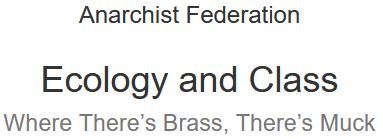


Safety: False Solutions
Government’s approach to safety is not to address the root of the problem – heavy, fast-moving traffic – but to enforce the segregation of people and cars. This means footways and pedestrianization for walkers, bike paths and lanes for cyclists. Motorways in Britain started as a means of separating pedestrians from the motor danger posed by cars. Experience shows however that the only road-user groups to gain substantially from segregation are car and lorry drivers. Cars have an immense greed for space that expands as opportunity arises, nullifying all but the most radical (total) safety strategies for pedestrians and cyclists. Because ‘solutions’ are devised always with cars in mind, they often cause more problems. Pavements must be protected from cars so the solution is to build rails along them, not to slow the cars down. Subways are rightly hated for their real and perceived danger. Visibility and surveillance are usually poor, and they are often badly maintained. Their steps are a particular problem for children and their carers, the elderly and people with disabilities. Foot-bridges suffer similar disadvantages in the other direction. Pedestrianization may segregate cars and people in inner-city areas but it also causes problems of access for the disabled and generates additional traffic in adjoining areas. For cyclists there is often insufficient space for continuous cycle tracks or lanes. The post-war British new towns, such as Stevenage and Peterborough, have a segregated network of cycle and pedestrian paths but this is inappropriate to older towns. Off-road routes (e.g. the Bath-Bristol pedestrian and cycle path) have been built on old railway sites, canal towpaths, bridleway’s and forest roads. But they are very limited in availability and prone to appropriation by more spacehungry and powerful forms of transport. Cycle routes using side streets are equally limited.
We have seen that “road safety” is a road lobby smokescreen to divert people from addressing the root of the problem — power. It is the power dynamic of motorisation, with its social effects of fear, retreat, isolation, ill health, injury and death. And it is the political power of the road lobby (large sections of the ruling class, the state, media, road safety lobby, oil/car/ construction companies etc). The road lobby causes the motorisation problem, then it defines how it is discussed through the “road safety” myth. Thus its ‘solutions’ prevail: keep pedestrians and cyclists out of the way, make ‘safer cars’ (safer for drivers, more dangerous for everyone else), and build more roads.
#anarcho-communism#anarcho-primitivism#anti-capitalism#capitalism#class#class struggle#climate crisis#colonialism#deep ecology#ecology#global warming#green#Green anarchism#imperialism#industrialization#industrial revolution#industrial society#industry#mutual aid#overpopulation#poverty#social ecology#anarchism#anarchy#anarchist society#practical anarchy#practical anarchism#resistance#autonomy#revolution
4 notes
·
View notes
Text
making up a rain world and sky cotl collab season for a target audience of literally just me.
The season would start with you entering a new area and the violence karma symbol flashing on your screen before dropping you into a tunnel, where you are then hunted by skyified lizards while the rain incoming sound effects play with increasing urgency. You flee until you find the opening to a shelter and make it safely inside, finding a slugpup curled up on the ground in the center who wakes up and squeaks at you when you approach. This slugpup then becomes the season guide and after turning in the first quest two murals appears on the shelter wall, one illustrating the slugpup getting separated from its family survivor-style and another showing the two of you meeting with the companionship karma symbol overlaid on top.
Completing this would unlock the main area of the zone, a large semi-industrial area in the ancient forest that was an old mining facility before falling into disrepair. The zone would be designed with a significant amount of verticality and populated primarily by lizards and squidcadas with patches of worm grass to look out for that resemble darkness plants. It would exist in cycles, with periodic rains causing the wildlife to flee and forcing skykids to find shelter for a minute or so before adventuring back out.
The next quest would have you pick up the slugpup and carry it outside to find food which would require dodging squidcadas to make your way up a pipe and find a bunch of blue fruit hanging from the ceiling. Upon reaching it, the skykid would try to explode the fruit with their candle, upsetting the slugpup. You would have to toss the slugpup up to the ceiling so it could grab the fruits, and the two of you would make your way to the next shelter where upon finishing the quest a new mural of you both with your bounty of fruits appears alongside the gluttony karma symbol.
By the start of the next quest, the slugpup would have grown a bit bigger and its squeaks would be slightly deeper. You would carry it back outside to find more food, but come across nothing and have to travel further into the zone. Upon spotting a cluster of blue fruit, you would be attacked by a lizard and forced into a chase sequence that would deposit you both in a small glade with a darkness crab. The crab would attack you and you would do a big honk to knock it over, upon which the slugpup would jump out of your arms and go eat the crab. Upon reaching the next den, a mural of you and the slugpup surrounded by lizards and crabs would appear with the survival karma symbol.
When you come back to the den for the next quest, the slugpup would be a fully grown slugcat and too big to be carried, meaning that you now lead it around by the hand. Heading outside causes it to indicate a route with a number of threats such as lizards and worm grass. Once you make it through you find a clearing with the slugcat home tree in the center. Investigating it together you find evidence that slugcats used to live there but no sign of life, leading to the slugcat going quiet. When you make it back to a shelter, no mural appears, and the rain gets stronger outside.
For the final quest, the still-silent slugcat would indicate a direction towards the most dangerous part of the zone, and the two of you would head that way together. It would be comparable to the eden run, with plenty of dangers that incentivized traveling in groups. The final stretch would lead you to a cave entrance being guarded by a massive centipede that would have to be avoided in order to make it through. Inside, you would go down a long tunnel lined with mural forms of the remaining karma symbols before making it to a glowing underground lake where the final karma symbol flashes on your screen as you pass a broken guardian. The slugcat would then let go of your hand, squeak once, and go into the lake, disappearing into a ball of light similar to when you revive spirits. The cave would go dark after this, but if you waited a few minutes the water would gradually begin to glow again and reflect against an enormous new mural on the wall depicting the ascension ending of rain world with the slugcat reuniting with the rest of its kind.
To try and match some of the elements of both games, the dangerous fauna you encounter throughout the zone would appear more like unlit skykids than darkness creatures, trying to indicate that they're animals surviving in their own way that you just don't have the means to connect with rather than evil monsters. Ideally basically every rain world creature would make it in but realistically that wouldn't happen so I stuck with just a handful. The zone would be designed to make you feel very small compared to other areas in the game, with oversized structures and large predators to somewhat mimic the small prey animal experience of rain world, and would have a varied weather system with frequent downfalls alternating between long calm periods. Seasonal spirits would be echoes who would talk to the player about their various views on the cycle and mortality while selling cosmetics that imply what they used to look like as ancients. Also sky cotl crossover in rain world would be an arena filled with dark crabs that you get dropped into as gourmand while the doom soundtrack starts playing.
#i finished all the sky seasons except for the fucking treehouse#cause you can honk piteously in the forest for hours and no one will come to save you#anyway i spent entirely too long on this and ill disagree with half of it by tomorrow. so i will now be passing away goodbye
6 notes
·
View notes
Text
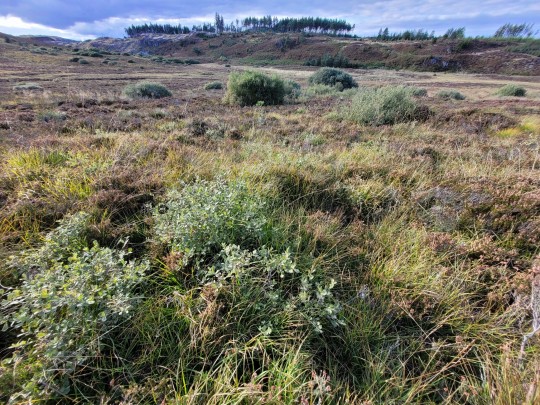


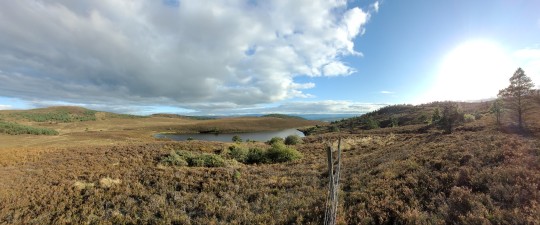


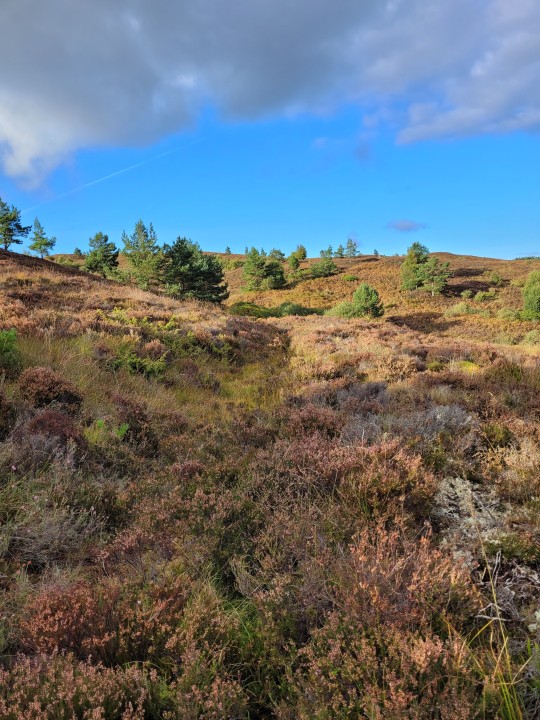



Scenes from the trail - new episode
I haven't been here much recently because reasons. Yesterday was an opportunity for me & the Bean to stretch our legs and clear our heads.
I was recently appointed to the board of directors of the local Forest Trust, which is on the threshold of a huge, once in a generation opportunity. Over 1100 acres (450ha) of land neighbouring the forest is on the market, and the owners are willing to consider a community purchase. We're forming a joint venture with another local organisation and hope to raise the funds to buy it.
That's no small endeavour - we'll need to raise more than £1 million - and at any stage, an external buyer could step in and beat us to it.
Anyway, as it's for the community, what better way to put a plan together than to ask the community for their views, ideas, and aspirations? So we're holding drop-in sessions here and in the neighbouring village. I thought it might be useful to have some images of a wilderness that many folks may never have seen.
Although this used to be the drover's route from Fort William to Inverness, there's little evidence of it today. Apart from the prolific heather, much of the ground is peat bog, giving us a clue that this was once a very different wooded landscape. It's ripe for rewilding, and the presence of well-established willow and juniper suggests that either the deer are few enough to be manageable (unlikely) or they stay out of sight in the forested areas. We'll also have to be aware of the wild boar that are regular inhabitants of Glenurquhart because this land adjoins the Glen, and its inevitable that they'll continue their eastward migration.
Peatland restoration holds massive potential for carbon capture and the opportunities for healthy pursuits are endless. Meall na h-Eilrig at 465 metres (1526 feet) sits above Loch Glanaig and provides spectacular 360° views. It's a grind getting there, but restoring and extending the old peat cutting tracks would make it much more accessible for both foot and cycle traffic.
So many things to think about. Now, where to find a spare million or so...
#scenes from the trail#meall na h-Eilrig#highlands#scotland#the great outdoors#hillwalking#landscape#my photography
39 notes
·
View notes
Text
rb's Free Rider's Motorcycle Memories (2 / oo)
On the Route des Grandes Alpes (Maritime Alps, France) – and some thoughts on the age of 60

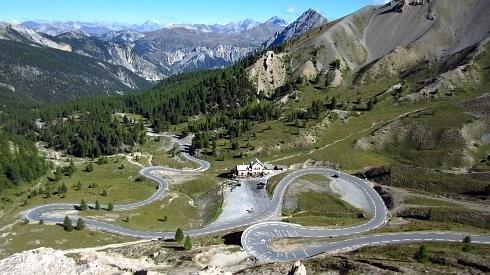
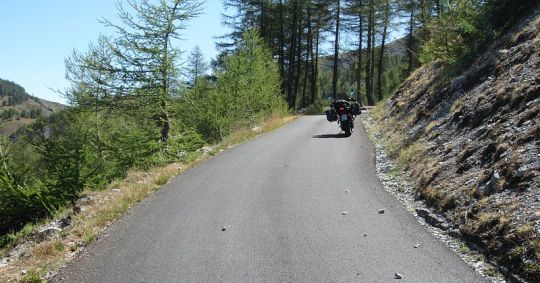

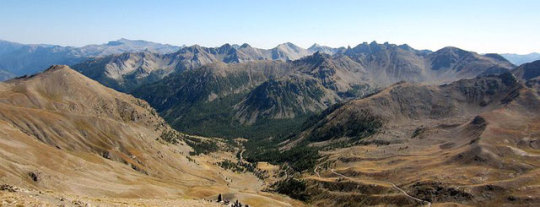

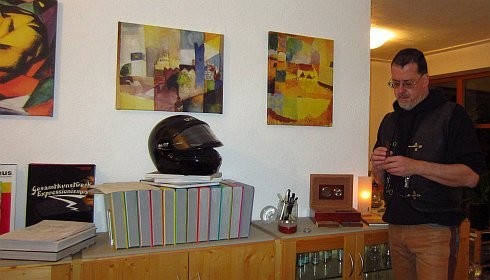
First picture: Me and my Triumph Tiger Sport 1050 on a pass on the Route des Grandes Alpes towards Nice via Valley of Isere (Val d'Isere): Col d'Allos.
With my type of motorcycle clothing 8-) , it was also possible to hike up to the managed lake d'Allos (Lac d'Allos) without any problems. It's about 30 minutes (one way) from the parking lot further up, which is subject to a fee in the high season. The path runs partly on a rocky track next to the meandering stream bed. The path is marked with information boards explaining the formation of the stream and the peculiarities of the lake and its surroundings.
However, I don't want to give a description of the Maritime Alps (discover them for yourself!), but rather make a few comments on how traveling by motorcycle has changed for me with age.
So, let's go back to the first picture: A good 10 years ago in a somewhat freer and simpler world (also for motorcyclists): less complicated, less regulated, more light-hearted than today.
When I was younger, I wished the journey would take forever, and I could well imagine living in this fantastic mountain world: right on the spot, so to speak, without the tedious approach route of hundreds of kilometers.
The latter is still the case today, although in view of developments in Europe, the question arises as to whether I am far enough away there from growing madness …
In the early years, I also savored the trip to the hilt and always returned well after midnight or in the early morning, usually in pouring rain.
Nowadays, at the beginning of my 6th decade of life, it's the growing feeling: "I'm here and it's still nice, the routes are still fantastic to ride; I've seen a lot again and also new things, but now it's also good to go home again". Today I usually stay overnight again on the route back - due to my age. One positive aspect of getting older is that the feeling of being back home becomes stronger. By "home" I mean the people and the landscape: the environment in which I grew up. People and landscape are interwoven in a special, almost mysterious way; a realization that takes time.
The last two pictures: So I usually come back in the early evening nowadays. If the weather is not too bad, I take off my luggage and immediately cycle up a few more 10 kilometers to our "small" mountain and forest landscape here; in good weather bathed in the almost golden light of the evening sun in late summer and early autumn. And I am enjoying our narrow mountain roads through our mixed forests, our green meadows and our gentle to rugged (steep) slopes of the vineyards.
Here it is the south of Baden-Württemberg, Germany, not the "far" south of europe. It is not the fantastic mountain and rock world of the Alps with its (drivable!) passes up to over 2700 m altitude, its deeply carved gorges, its mountain lakes and streams, its alpine farming areas, its often grotesque and "dangerously" narrow roads, with their different people, their slightly different way of life. (You see, I'm already starting to miss that again.)
But it's my home and it feels good to be back.
And to get ready again for the next trip.
(Tanslated from German with DeepL - free version.)
#motorcycle#motorbike#road trip#maritime alps#grande alps#route des grande alps#alpen#alps#motorrad#motorradreise#rb's Free Rider's Motorcycle Memories#triumph#tiger sport 1050#Col d'Allos#bonette#Col des Champs#Col d'Izoar
5 notes
·
View notes
Text
The Must-Visit Destinations Germany
Germany, with its rich history, vibrant culture, and stunning landscapes, offers a diverse array of attractions that cater to every type of traveler. From the bustling streets of Berlin to the fairytale castles of Bavaria, Germany is a treasure trove waiting to be explored. Whether you're a history buff, a nature enthusiast, or an art lover, Germany has something special for you. Here are some of the best places to visit in this captivating country.

Berlin: The Heart of Germany
Berlin, the capital city, is a dynamic blend of the old and the new. Its historical significance is palpable as you explore iconic sites like the Brandenburg Gate, the Berlin Wall, and Checkpoint Charlie. The city is also a hub of modern art, culture, and nightlife. The East Side Gallery, a preserved section of the Berlin Wall covered in murals, and the Museum Island, a UNESCO World Heritage site, are must-see attractions. Berlin's diverse neighborhoods, each with its unique vibe, offer endless opportunities for exploration.
Munich: Bavarian Charm and Oktoberfest
Munich, the capital of Bavaria, is renowned for its picturesque architecture, world-famous beer gardens, and vibrant cultural scene. Marienplatz, the central square, is the perfect starting point to explore the city's historic buildings, including the stunning New Town Hall. Munich is also home to the legendary Oktoberfest, the world's largest beer festival, which attracts millions of visitors each year. Don't miss a visit to the Nymphenburg Palace and the English Garden, one of the largest urban parks in the world.
Neuschwanstein Castle: A Fairytale Come to Life
Nestled in the Bavarian Alps, Neuschwanstein Castle is straight out of a storybook. Commissioned by King Ludwig II, this 19th-century Romanesque Revival palace served as the inspiration for Disney's Sleeping Beauty Castle. The castle's picturesque setting, surrounded by lush forests and towering mountains, makes it one of the most photographed sites in Germany. Guided tours offer a glimpse into the opulent interiors and the fascinating history of Ludwig II's dreamlike creation.
The Romantic Road: A Scenic Journey
The Romantic Road is a picturesque route that winds through some of Germany's most charming towns and villages. Starting in Würzburg and ending in Füssen, this scenic drive takes you through medieval towns, vineyards, and castles. Highlights include the walled town of Rothenburg ob der Tauber, known for its well-preserved medieval architecture, and the baroque city of Würzburg, with its impressive Residenz Palace. The journey culminates at Neuschwanstein Castle, providing a perfect end to this enchanting road trip.
The Black Forest: Nature's Wonderland
The Black Forest, or Schwarzwald, is a region of dense forests, rolling hills, and quaint villages. Famous for its cuckoo clocks, thermal spas, and scenic beauty, the Black Forest is a haven for outdoor enthusiasts. Hiking, cycling, and skiing are popular activities in this area. The town of Baden-Baden, with its luxurious spas and casino, offers a touch of elegance, while Triberg is home to Germany's highest waterfalls and the Black Forest Museum, which showcases the region's rich cultural heritage.
Hamburg: The Gateway to the World
Hamburg, Germany's second-largest city, is a bustling port city with a unique maritime charm. The historic Speicherstadt, the world's largest warehouse district, and the modern HafenCity, with its striking Elbphilharmonie concert hall, showcase Hamburg's blend of old and new. Take a stroll along the Reeperbahn, known for its nightlife and entertainment, or relax at the serene Alster Lakes. Hamburg's rich musical heritage is evident in its numerous theaters, live music venues, and the Beatles' early performance venues.
Conclusion
Germany's diverse landscapes, rich history, and vibrant culture make it a destination that promises unforgettable experiences. Whether you're exploring the historic streets of Berlin, sipping beer in a Munich garden, or marveling at the fairytale beauty of Neuschwanstein Castle, each destination offers a unique glimpse into the heart and soul of Germany. Pack your bags and embark on an adventure that will leave you with memories to cherish for a lifetime.
3 notes
·
View notes
Text

(Coat of arms of Windenburg)
Windemburg is a large and diverse country, with a population of approximately 41.32 M people according to the last census, its geography ranges from impressive coastlines to imposing mountain ranges. On the west coast, the Sea of Aegir laps the golden sand beaches, providing fishing routes and a mild climate. To the east stretch the Moon Mountains, with peaks covered in snow for much of the year and deep valleys containing ancient forests.
The Lys Valley, where the capital Lysgard is located, is located in the center of the country, surrounded by rolling hills and green fields.
In Windenburg, culture is characterized by deep-rooted values that promote community, harmony and respect for nature. Some important values for citizens include honesty, solidarity, and appreciation for tradition. The connection with nature is reflected in seasonal festivals and rituals that celebrate natural cycles.
Windenburg flag:

Windemburg has its roots in ancient times, when nomadic tribes settled on the banks of the Eilen River. The first inhabitants, known as the Eilenites, were dedicated to agriculture and fishing. Archaeological remains indicate that the region was inhabited since 3000 BC.
In 500 BC, the unification of the tribes under the leadership of a charismatic leader, König Aminus, marked the beginning of the Age of the Aminus Empire. This civilization ruled what is now known as Windenburg for almost 2,000 years.
In the 9th century the Empire saw its end due to years of poor harvests and popular rebellions that caused its destruction and a new restructuring. Society was structured in a feudal system, with nobles ruling vast tracts of land and peasants working for them, the largest of these lands being ruled by the Windemburg Family. The fortification of cities and the construction of castles were prominent features of this period.
In the 15th century, after what was known as the War of the Fiefs, all the fiefs were unified into one great country: the Kingdom of Windemburg.
Government and Politics
Windemburg is one of the few Absolute Monarchies left on the continent of Arantis, although it has its peculiarities.
The government is made up of the Monarch who is the highest authority and his eight Parliamentarians, formerly known as Advisors, elected politicians who represent each of the regions of Windemburg defend the interests of their region and advise the Monarch in his political decisions, below among the Parliamentarians are the local Mayors. Justice is independent and is based on a system of codified laws that guarantee the rights and freedoms of citizens.
Economy
Windemburg is known for its robust technology sector, especially the city of Techvalley is an epicenter of innovation, where startups and technology giants develop cutting-edge products and solutions. The government actively supports research and development (R&D) through tax incentives and subsidies.
Agriculture remains a fundamental pillar of the Windenburg economy. The Eilen River Valley is one of the most productive agricultural areas, growing cereals, fruits and vegetables. Fishing is also essential in coastal areas such as Tartosa or the Sulani Islands.
(This section is still in the process of creation)
#royal simblr#sims 4#the sims 4#simblr#ts4#windemburg#my sims#sims 4 screenshots#the sims#sims royal family
4 notes
·
View notes
Note
so what will the ranking system look like? any special ranks?
Hello, yes! We will have special and unique ranks for every clan.
Every clan will follow the pattern of having a leader, deputy/advisor, physical healer, mental healer, a Soothsayer/divinator, and a diplomat (acts as a messenger and peace keeper). The other "typical" ranks are warrior, apprentice, queen, kit, elder. The names of these ranks will depend on the group.
We also have 2 unique ranks per clan. An apprentice will be able to decide (or it will be decided for them) which role they are able to take. If they do not take the role of a healer or warrior, they have 2 other options. I will list them below! The information guides for the different groups should be coming out soon, but just to give you a sneak peek:
THE HIDDEN COVEN
Shadow Stalkers: The Coven's elite task group, highly specialized and highly skilled. They are capable of moving through the marsh undetected through the shadows, and are responsible and crucial for gathering information from other clans. Shadow Stalkers are used to spy on other clans, and as such are to report any threats or useful information, as well as those who are sent to infiltrate other territories if needed in a sabotage event. They are responsible for silent patrols, stalking silently to ensure there are no intruders or threats that go unnoticed within the territory, as well as are able to act as an emergency response team and swiftly warn of incoming threats.
Twilight Wardens: These are specialized cats who patrol and protect the Coven’s territory during the night. Their excellent night vision and ability to navigate the dark marshland makes them perfect defenders during the hours when other clans might be at their weakest. They are responsible for patrols and guarding among the twilight hours, where their excellent night vision helps them excel.
THE PEAK WATCHERS
Stone Jumpers: Specialized navigators of their rocky terrain. These cats have exceptional agility and strength, allowing them to scale cliffs with ease. They also can jump far distances, and are responsible for high-ground patrols and leading rescue missions within the cliffs.
Peak Watchers: The scouts and signallers of the group. They specialize in using the acoustics of the rift and rocky terrain to detect and project sounds. This allows the clan to communicate over long distances and detect potential threats early.
THE REED COLONY
Wave Riders: Specialized swimmers and navigators of the Colony’s aquatic territory. These cats have great swimming skills and a deep understanding of the lake and creeks. They are responsible for leading water-based patrols, rescues, and fishing expeditions.
Tide Watchers: Observant guardians of the Colony who specialize in monitoring the weather, water levels, and environmental conditions. They play a crucial role in predicting changes that could impact the clan, such as flooding, and preparing for these changes.
THE BRAMBLE KEEPERS
Fire Tender: Excels in the usage of fire and how to control it. Living in an area that is prone to intense overgrowth as well as forest fires during the dry summers is a recipe for disaster, so to combat this the group has formed a role that enacts controlled burns within the pine forest. These controlled burns allow for new growth to appear as well as burn away older growth, and gives less for forest fires to latch onto during the summer cycle, as well as provides the soil with nutrient rich ash that promotes new growth. As a group that values and reveres the cycles of life and death, and the seasons, fire tenders are seen as very brave and are respected for their role.
Pathfinder: The Pathfinder is an expert at navigating through the dense forest and hidden pathways of the Keeper’s territory. They specialize in scouting and creating safe routes, as well as planning new paths through the underbrush. They are very crafty and good at bramble weaving.
THE SKY RUNNERS
Wind Racer: The Sky Runners do not have individual healers; instead they have the Wind Racers. This role is important and core to the group, as each Racer is trained in the art of healing, both physically and mentally. They are trained to be able to carry any materials needed, such as bundles tied with grasses, and sprint long distances quickly (they act as the group's cat equivalent to a humans' EMT service). It is not an easy job, as it requires each Racer to keep a steady head under pressure and to be able to deal with whatever incident that may have occurred. Be it intergroup conflict, predator attacks, or even traps set by the hunter. The Sky Runners are known to not just have the Racers tend to their own group, but in dire circumstances are known to send them to other groups or even clanless cats in need.
Burrower: The tunnels within the grasslands and hills are not all burrows dug out by rabbits and coyotes, but the Sky Runners as well. Though they feel safer and more free under the stars, that wide open freedom can be a disadvantage at times, and circumstances will urge the group to go underground. Be it large predators or inclement weather, the Sky Runners are able to escape due to the Burrowers. Feeding into their semi-nomadic lifestyle, the Burrowers carve and expand upon tunnel systems within the hills precisely. Cats who are drawn to this rank tend to feel more comfort underground, finding safety within the enclosed walls. These tunnels help sustain The Sky Runners way of life.
We hope this helps to give an idea of what is to come, and we apologize of the length of this! Let us know if you have any other questions!
- Between Distant Horizons Staff Team
#warrior cat rp#warrior cat#warrior cats#wcrp#open wcrp#warrior cat roleplay#warriors#discord wcrp#new wcrp#discord rp#erin hunter warriors#warriorcats#betweendistanthorizons
2 notes
·
View notes
Text
Year of the Dragon 龙年
Year of the Dragon 龙年
Enter the wood Dragon. Another day & beginning the cycle That leaps into a turbulent Transformative lunar new year.
Your lucky numbers 1, 6 & 7. 3 & 8 avoid if you can. Lucky colors gold, yellow, silver. Limit blue & green Advised the sage.
& the obligatory red, Fan Tai Sui must be appeased. Wear red briefs, red socks, Red knickers, anything red. & go to church, temple, Synagogue or mosque.
Celebrate with family & with or friends. If solitary is your serving Open the window, smile! Let us invite Another new year in.
What can be said About entering the Dragon. That divine creature. Creator, Destroyer & shapeshifter Said to take on human form.
Identified with Jiaolong, Not those ferocious flying Fire breathing dinosaurs. More benevolent, Less malevolent, This Dragon breathes The clouds instead.
A composite of a head Shaped like a camel, Antlers of a stag, Ears of a bull, Body of a snake, 117 scales of a carp, Belly of a clam, Feet of a tiger, Talons of an eagle & eyes of a demon – Ever seen a demon? Have it as you will.
Tenacious, Courageous, Tianlong could lead the world. A dominant, ambitious spirit, Even emperors proclaimed it: I’m a son of a Dragon – I’m a son of Heaven.
So why in the Great Race Did you come 5th place? Jade Emperor bemused, Queried why you not first? Such a powerful being You can fly without wings, The Dragon took a pause & proceeded to explain.
There was a fire blazing In a village en route. The people begged for water To extinguish the danger. The Dragon produced rain Which took a little time.
Then flying over the forest, & back on track, He saw a crane to be eaten By a fierce wild dog. The Dragon intervened & the vigorous fight took Longer than expected.
Then on the last leg, Over the swirling current, On course to break The finishing tape on land. He saw the rabbit in distress, Desperately clinging to a log. Took pity & advanced A helping hand. Puffed the magic Dragon Forfeited the glory, Easing the grateful rabbit Safely to shore.
Impressed Jade Emperor, Though the Dragon came 5th, Sanctioned it To reside in the celestial sky. & master the creatures Of the bountiful seas. & made an engineer, Master of the rain – ordained An immensely generous & noble being.
Symbol of power & honor: Though out of all in the zodiac The only fictious character.
Lunar year starts tragic – Raging conflicts, Problematic elections, Economic strife, Seething inflation, Job insecurity, Some going hungry, Double digits Just to live in your home.
Pleading to Tianlong. Before immersing in longwu, We summon you to petition Jade Emperor Yu Huang:
Calm this earthly thunder. Work your magic Work your wonders. Project your reflection – & if we make it 祝你好运: The year of the Snake, Slithering through.
https://skendongpoetry.com/archives/6834
3 notes
·
View notes
Text
Day One Hundred and Four


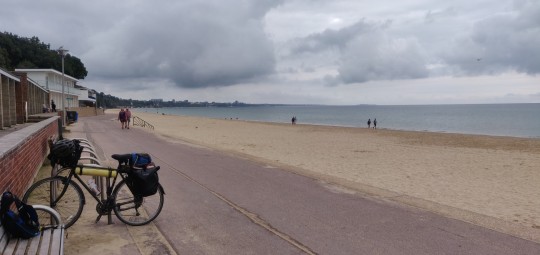
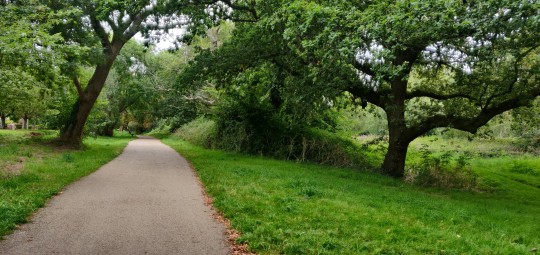
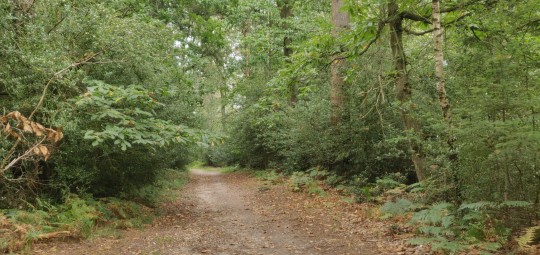
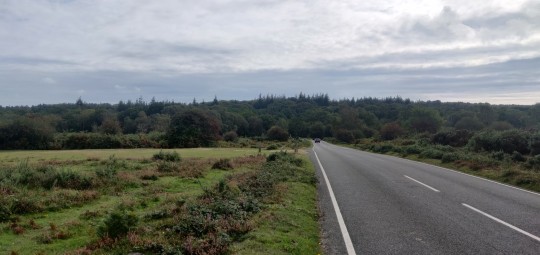
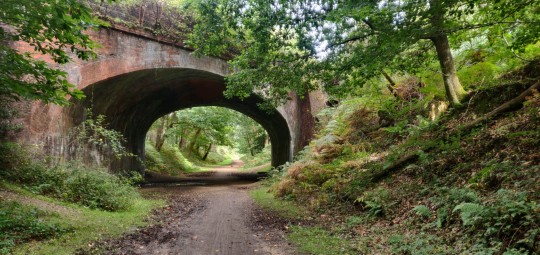
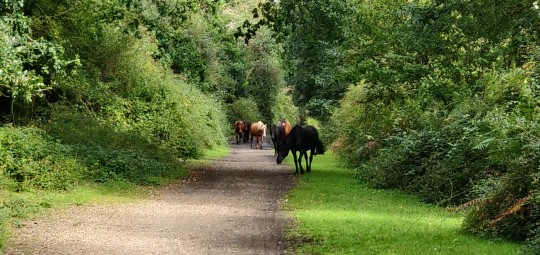
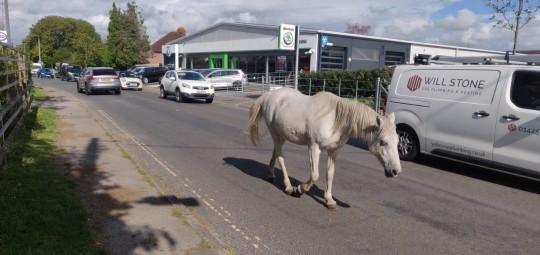
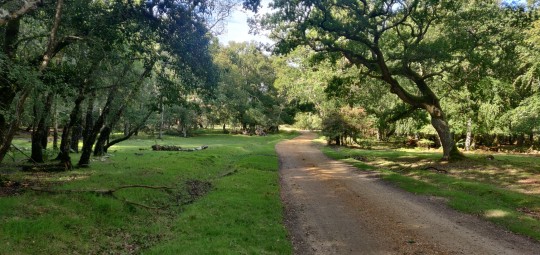
Well rested and up at 7am this morning in a pleasantly sheltered patch of trees a little outside of Wareham, it's time for another day at it!
On to the road, it's an easy start to the day with a gentle roll over the River Frome and through the nice little town of Wareham.
The place still seems to be in the process of waking up currently, and the streets are nice and quiet as I ride through and out over the River Piddle or Trent.
Rather than getting the overpriced ferry down at Shell Bay, I'm tracking around the bay and heading up the A351, which has a nice compliment of cyclable pathways running up past the busy dual carriageway junctions and into Upton.
A bice long run of road down through Hamworthy brings me back to the waterside once more to the nice quayside down at Poole.
It's now time for a stretch of riding that I've been looking forward to since seeing its potential coming up in the map, with many decent flat miles ahead of waterside riding. Let's get to it!
Around Poole Quay and past the harbourside, the trail leada on through Baiter Park with the water lapping up right next to the paving.
The path rolls past the boating lake before a short leg through some busy roads, before dropping dowj back onto the shore road.
I follow the road out for a loop around Sandbanks and past the ferry terminal, before heading back and turning off to hit the beach.
Ahead is a beautiful long run of promenade next to the lovely sandy beach, running for miles below Bournemouth's pretty cliffsides.
The day is a little grey still which is keeping tue seaside a bit quieter so far, which means fewer pedestrians to navigate around as I enjoy a nice gentle flat ride around the beach.
It's a lovely bit of riding as I roll up and around Bournemouth Pier and onwards along the full run of promenade up to the far edge of Southbourne, where I pick back up with NCN Route 2 as it heads up over the River Stour and in through Christchurch.
The town is quite busier than the beach today, so I keep at the trail as it heads out around some nice trails through Stanpit Marsh and then up along the side of the River Mude.
Past some busy road junctions, the route does a good job of keeping out of traffic is it twists through some back roads and out into the countryside once more.
It's time for another unland diversion here with a bit that I've been looking forward to as Route 2 heads up into the beautiful woodlands and moors or the New Forest.
After meandering through the roads here, the route heads past Holmsley and hits the offroad trails through open land filled with horses and cattle roaming freely.
The terrain isn't ideal for my loaded touring bike, but I'm setting a gentle pace and ensuring the bumps and rocks aren't too much of a hazard.
The route heada down some lovely forested trails and along a lovely old rail line before swinging into Brockenhurst.
Even the more urban parts of New Forest are amazing to see, as horses and donkeys roam the streets here and do not give one single damn about the flowing traffic.
With a bemused smile on my face, I roll through and out of town and back to the trails, where I have to navigate through another herd of horses.
I also catch sight of an elusive grass snake speeding out of my way, which causes a laugh of joy. They're an animal I've loved since I was a child and seeing one is a highlight of the entire trip.
Slowly making my way along the stoney trail, the route through the forests lead out past the campsite at Denny Wood and onto the road across the wide open moors. There's a good bit of crosswind blowing along here, but the cycle route soon turns once again to set it at my back.
Past more moorlands and patches of woods, the route heads past a busy bypass and into the edges of Applemore with a convenietly placed supermarket for me to stop off at.
With the day getting in and a long urban stretch ahead, it looks like a good position to settle up for the day!
It's been a very enjoyable run today and the terrain is getting so much easier to tackle now I'm out of the real tough hills and cliffs if the West Country. A check of the map suggests that I may only be around 400 or so miles from the end of my ride now, which is a scarily short distance considering how far I've come! We'll see how the rest of the week unfurls!
TTFN!
5 notes
·
View notes